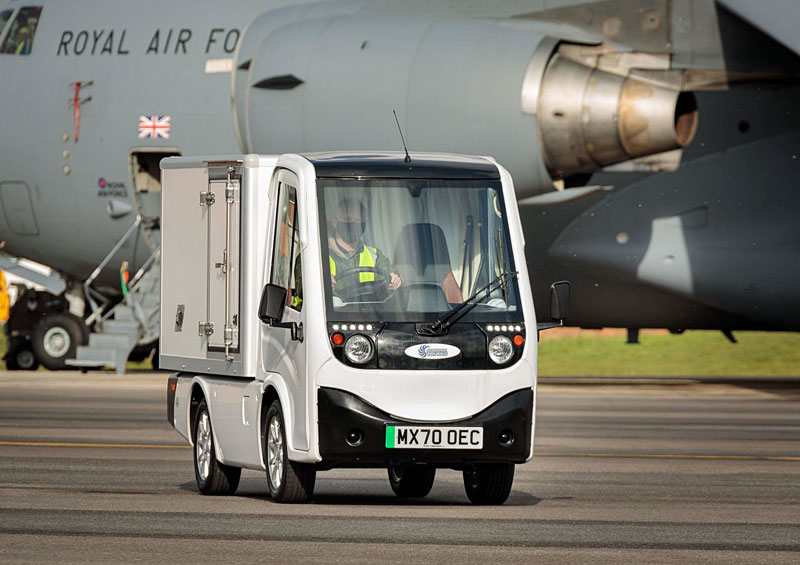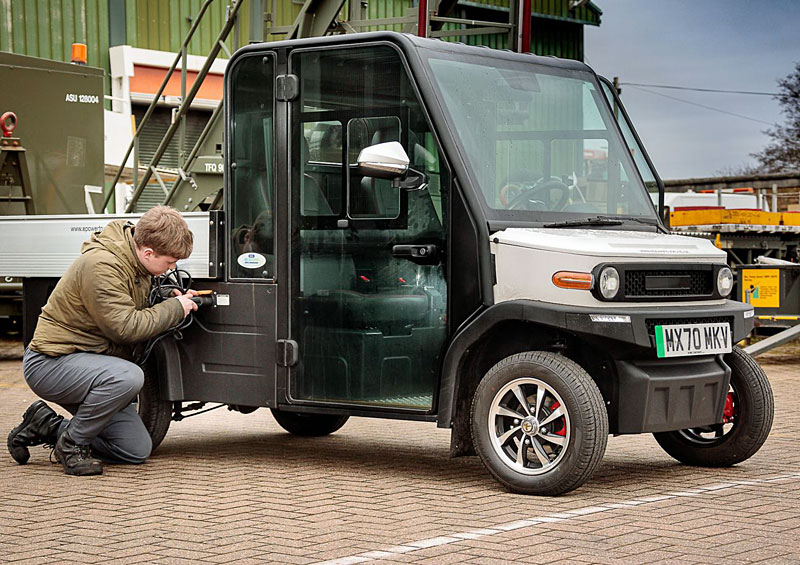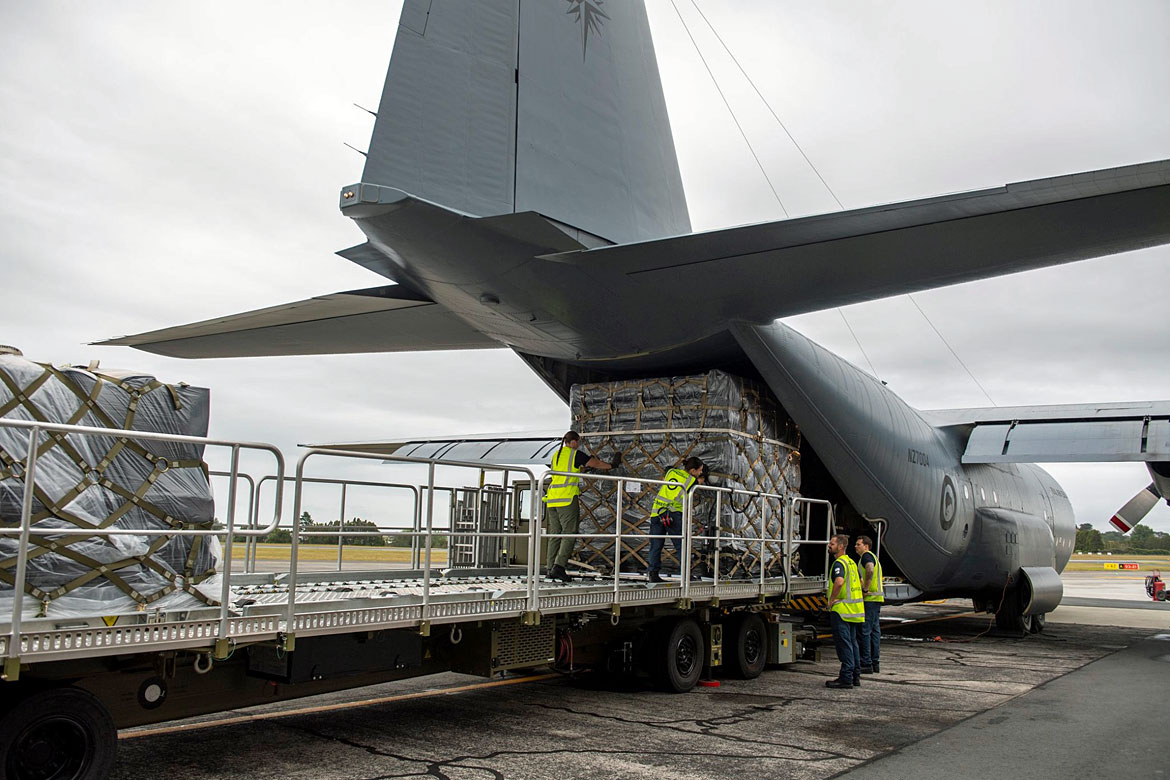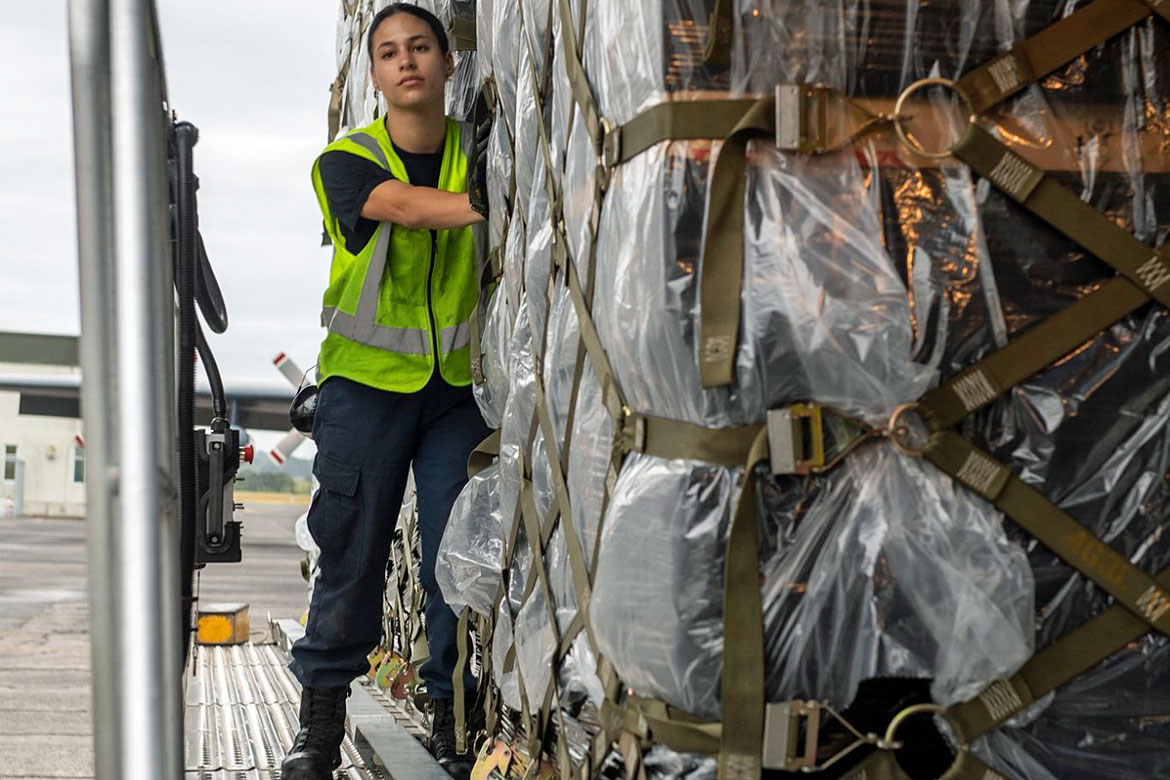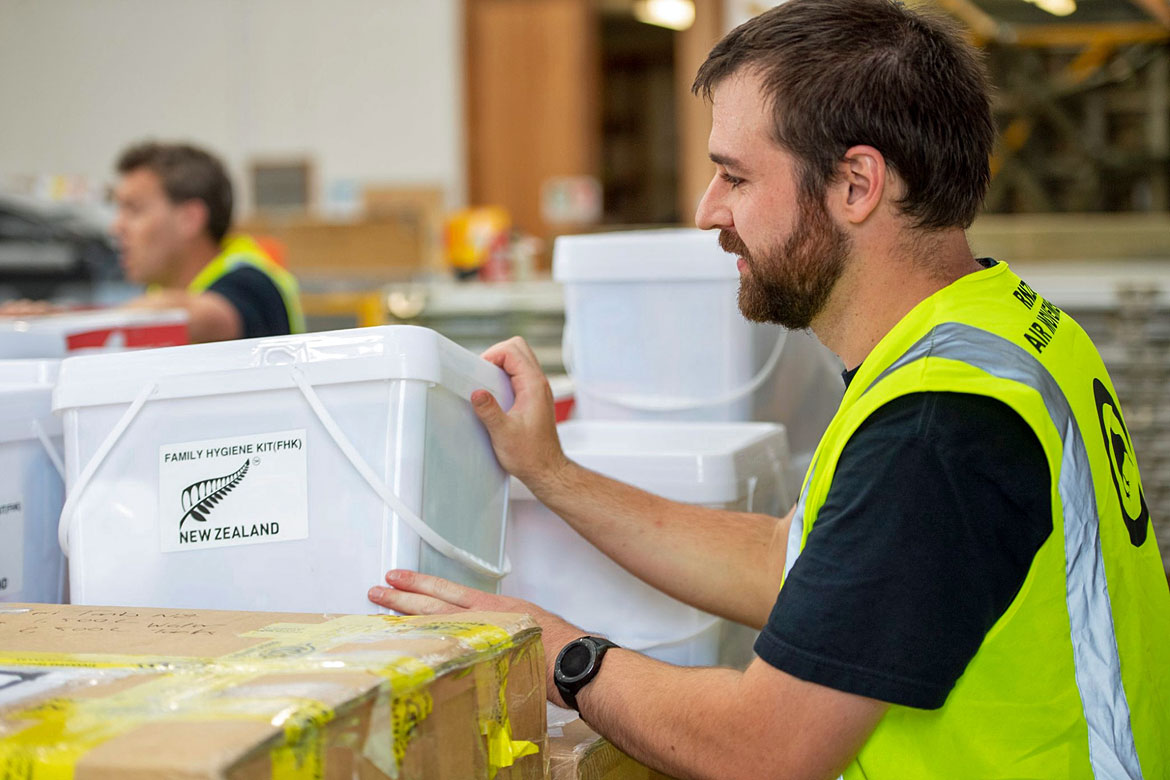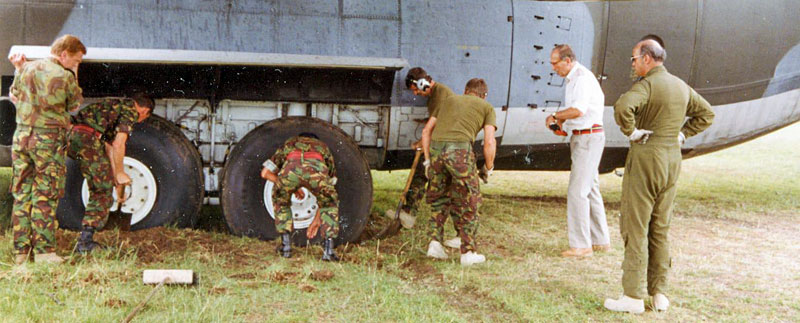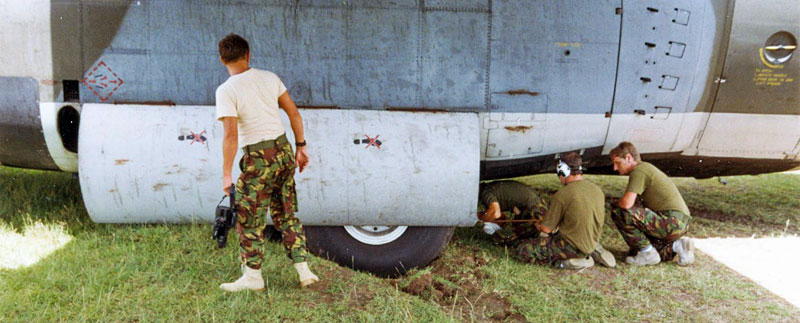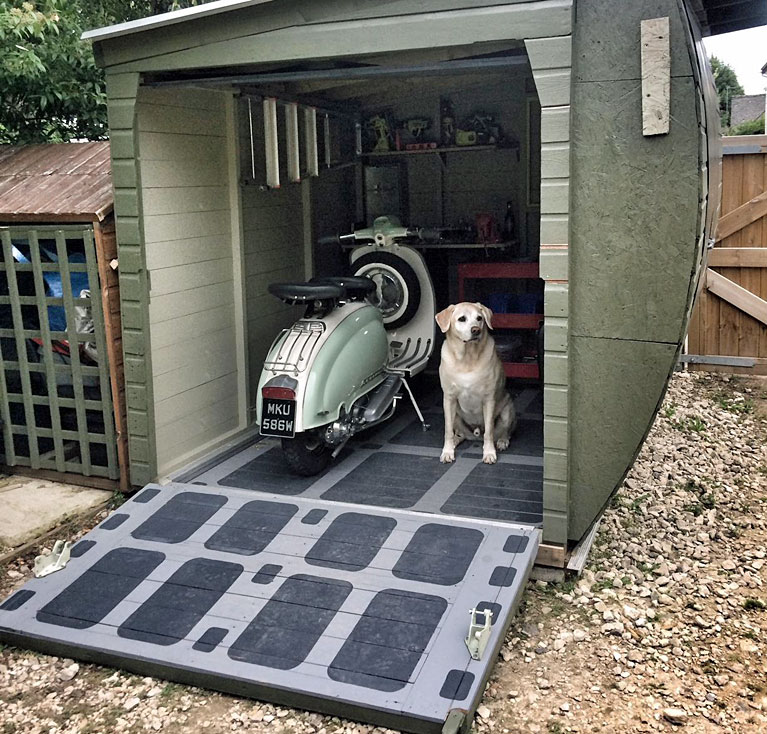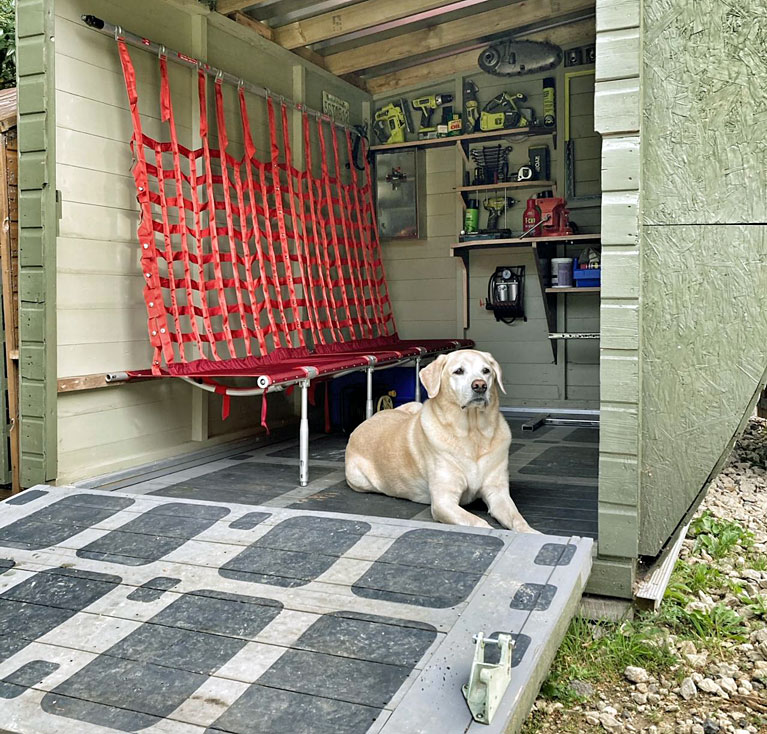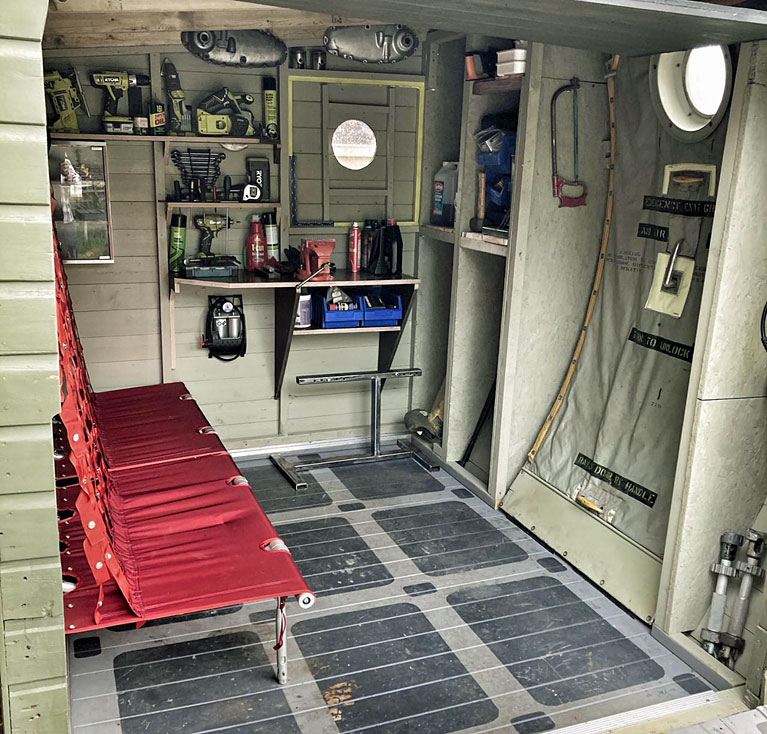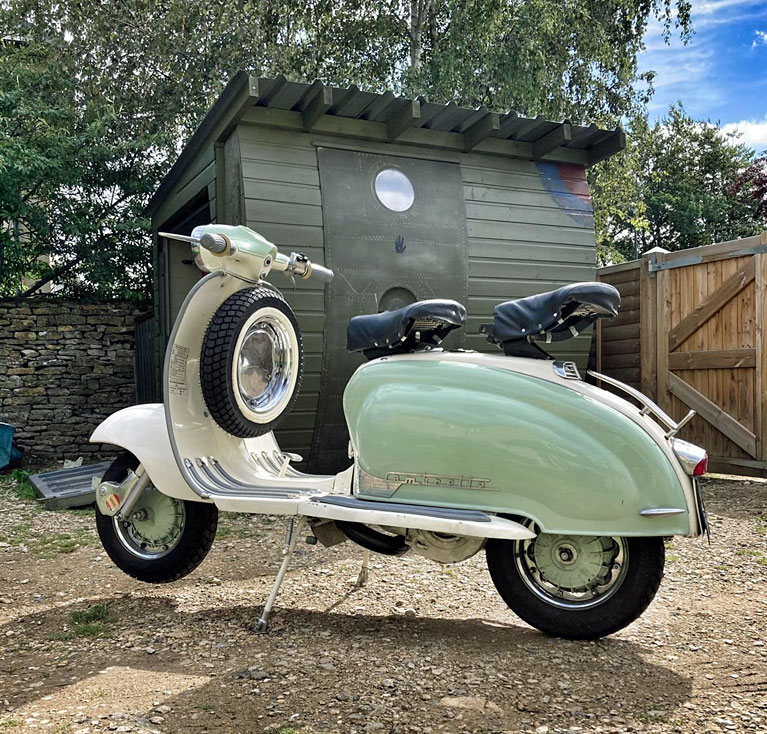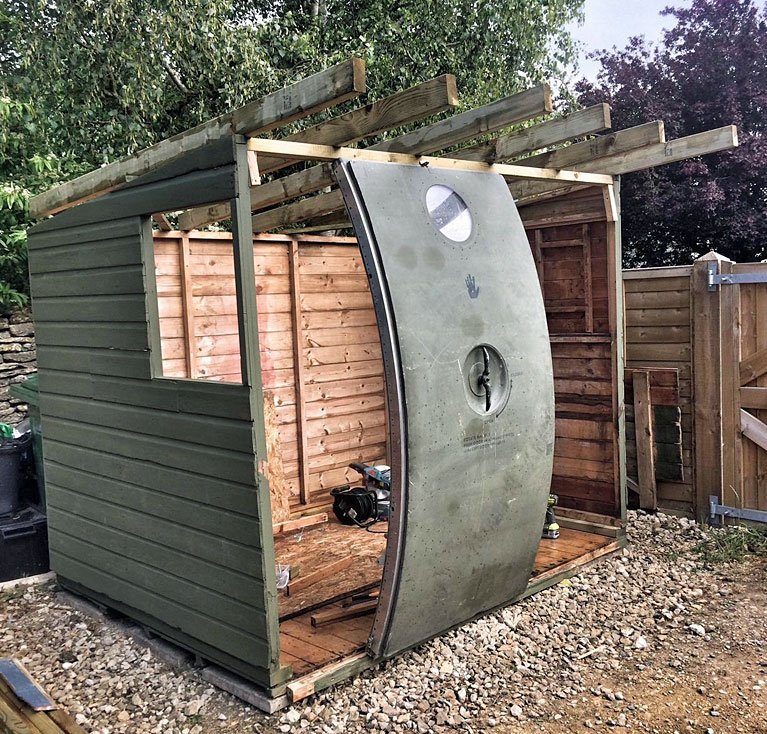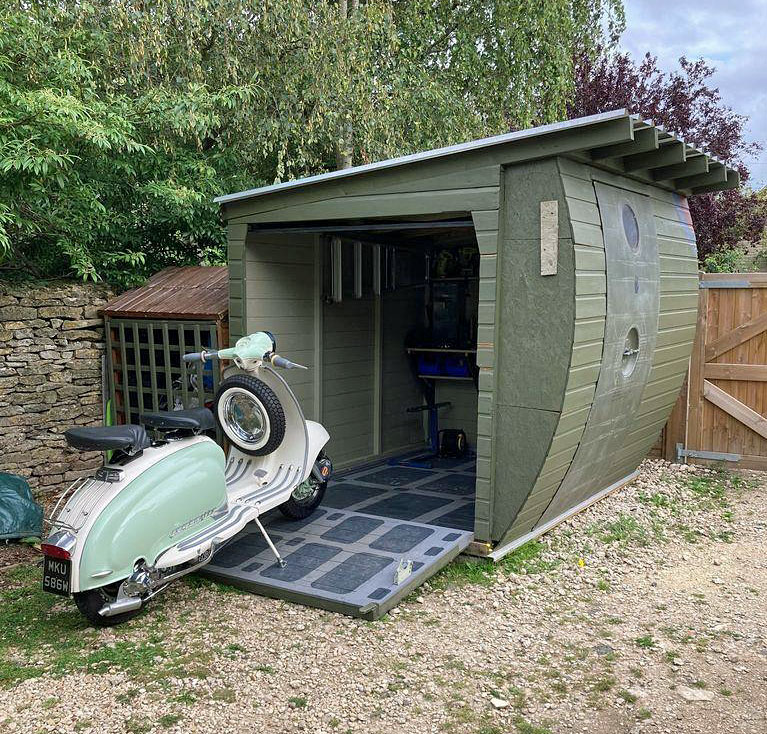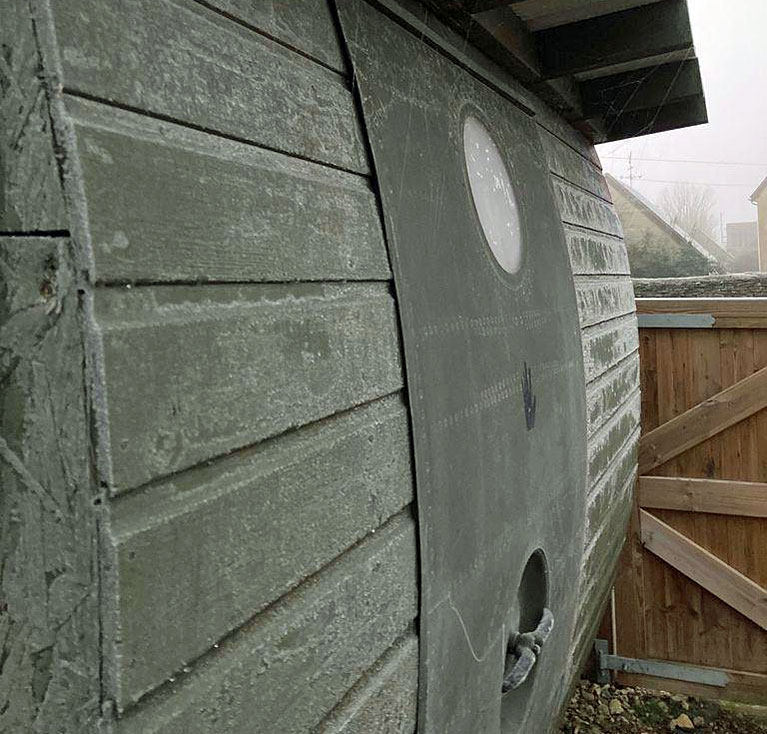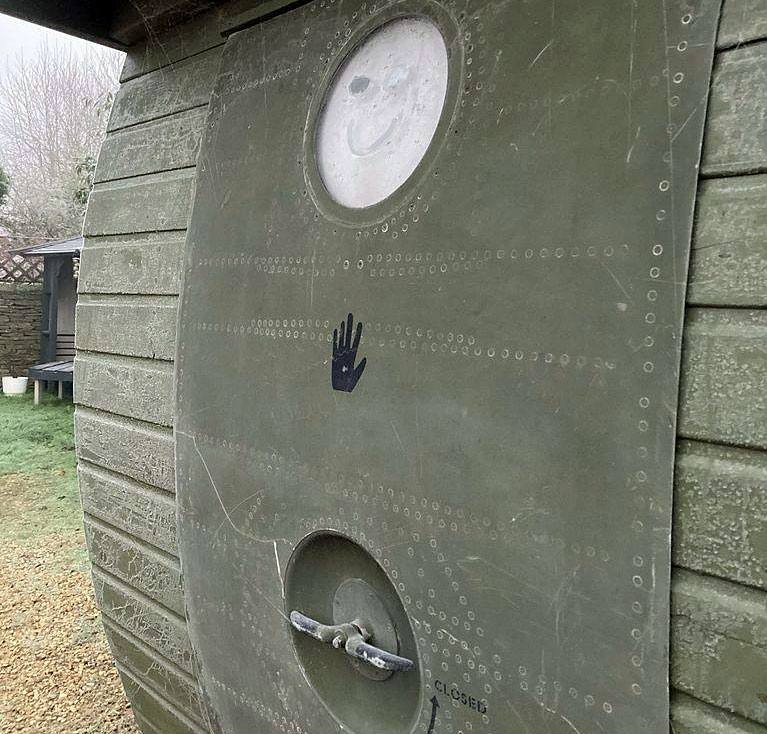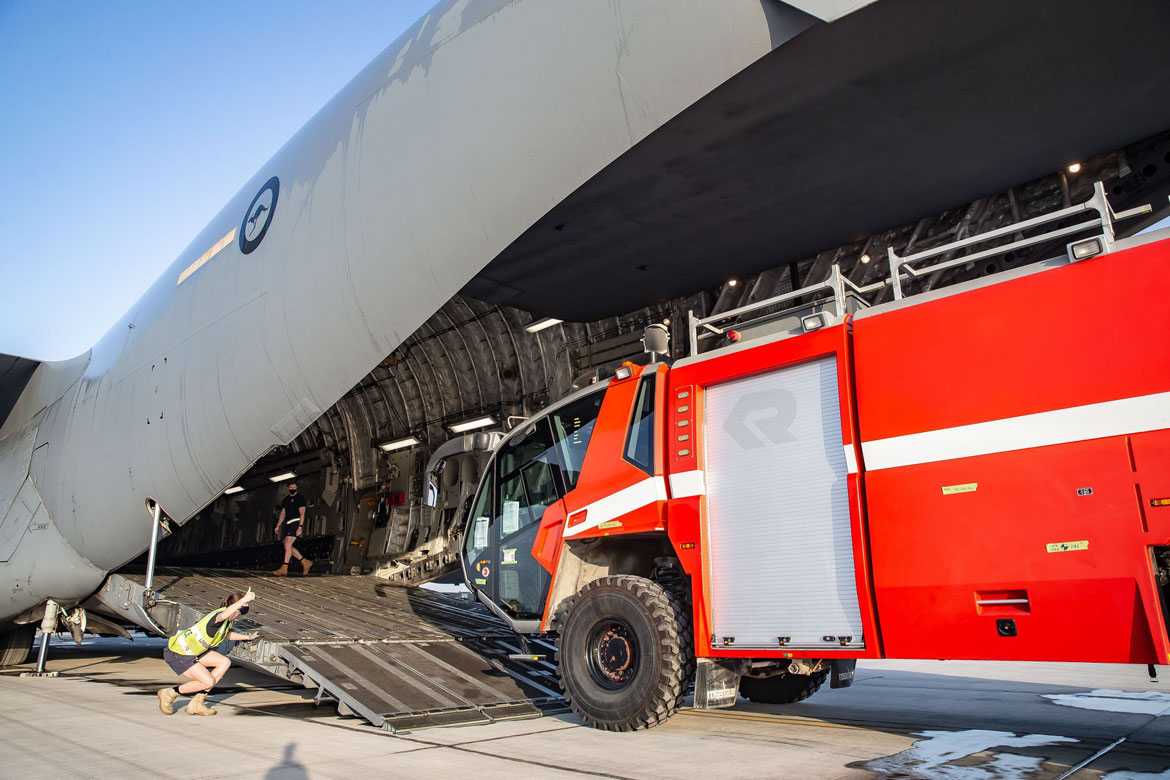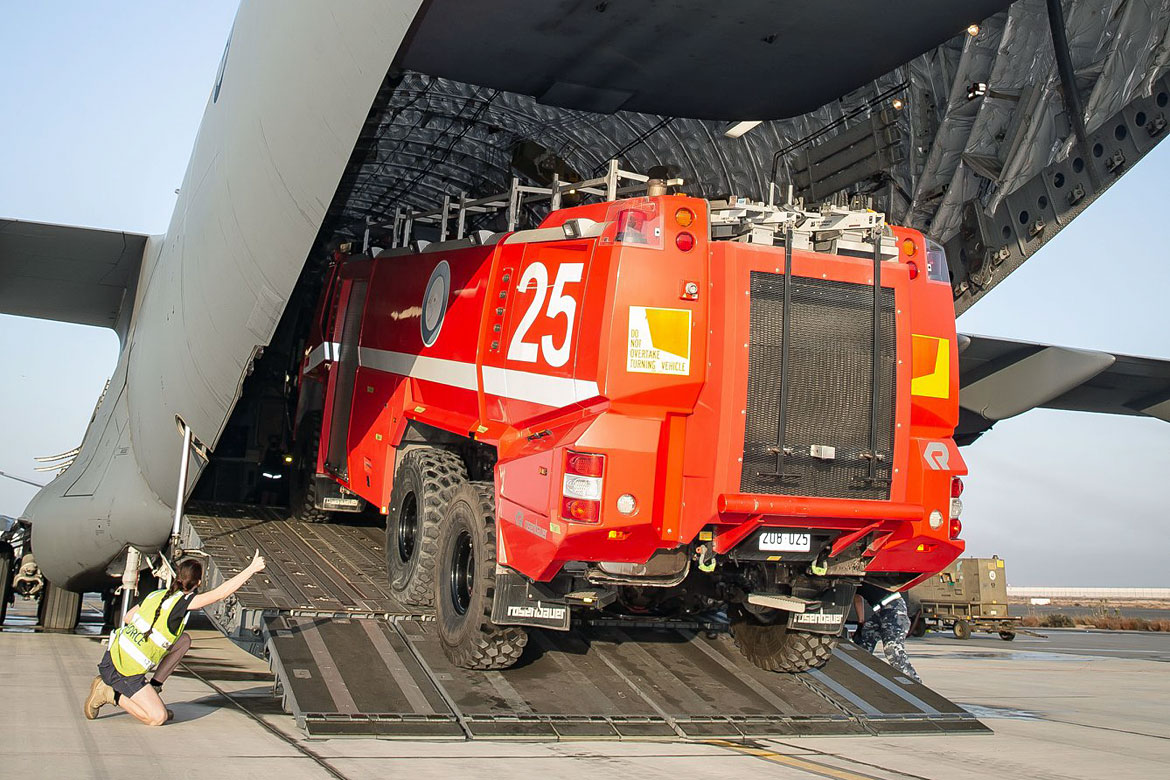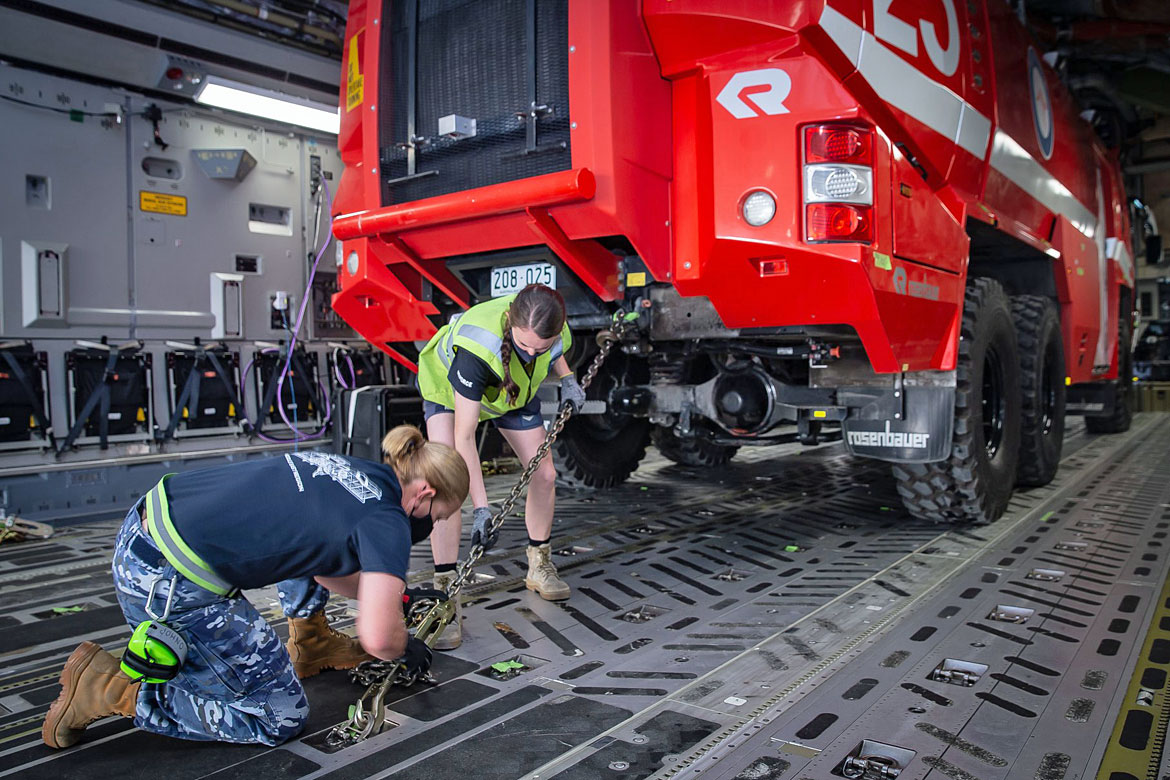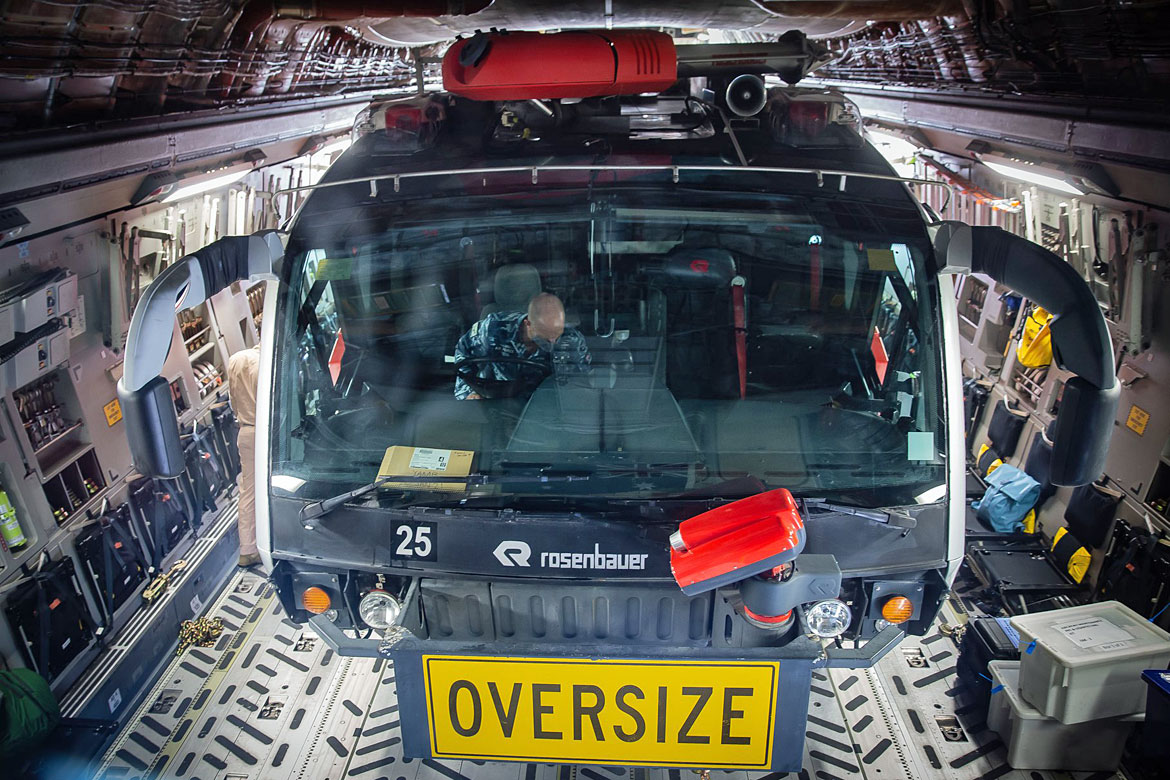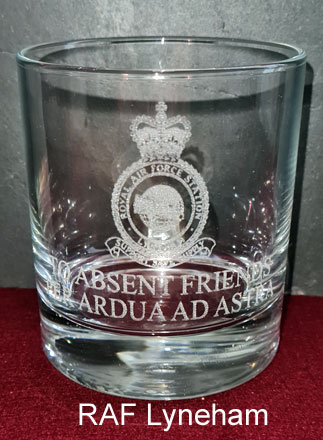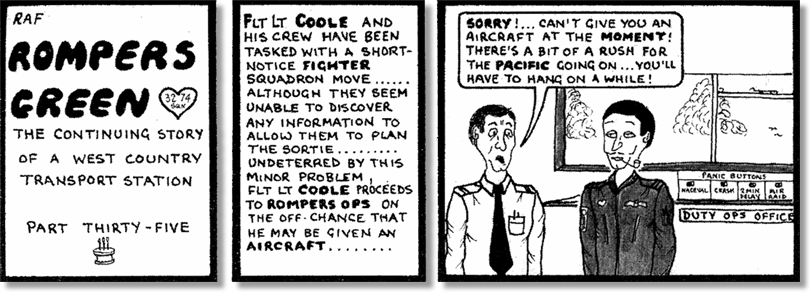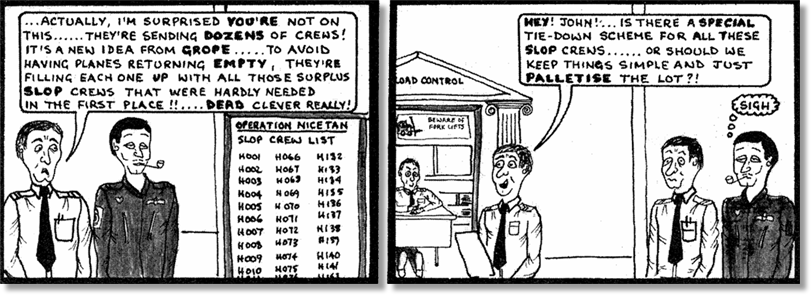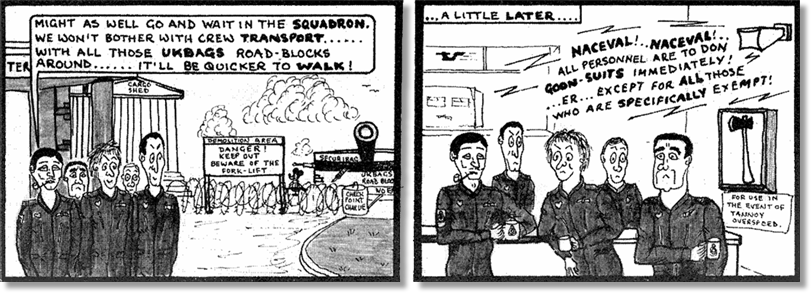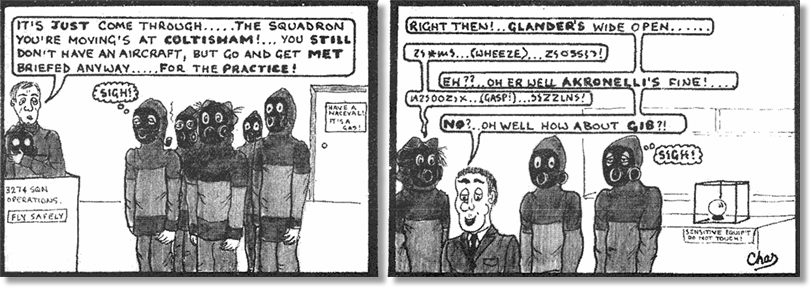




Subject: No Health & Safety
On the topic of health and safety, this tale springs to mind. A classic in how not to do it and not related to any aircraft or dangerous loading techniques. No, this was the day 3 PTI’s at RAF Lyneham, had a mortal near miss from the UKMAMS standby team, who were taking part in the CO’s Cup mandatory athletics participation.

Eager to participate, faster than a TFD guard in the depths of winter, the team trudged off to the nearby sports field, to get changed and have a briefing from a stay pressed PTI, gleaming in the sunlight. We were advised we must all undertake one running event, points being awarded for fast times and 2 field events, with points being awarded for distances thrown or jumped.
A quick team chat with the young PTI, as to what was on offer, and decisions were made. We will have a go at the 100 meters as its over quickly, good thinking. Followed by the long jump, nice soft landing in the sand and not too far to run. Last was a unanimous decision, an event no one had ever tried before, hammer throwing.
The 100 meters was conducted successfully and the PTI, being very complimentary at our efforts, said he thought it had been undertaken in slow motion, we did chuckle at his obvious humor. Recovering our bruised egos, we meandered over to the long jump pit next. Waiting for the professional PTI adjudicator to arrive, we began to warm up discussing the merits of various run up ideas.
Unbeknown to us we had been observed by our gleaming white adjudicator, who this time was genuinely impressed at our starting stances, as we rocked back and forth, flicking our hands out in front of our bodies and slapping our thighs, in our warmups, as seen on TV. None the less, we eagerly encouraged him to show us how to do it. With a spring in his step and a I’ll show you how this is done, he catapulted himself down the cinder runway, and soared into the air, like an F18 leaving the USS Nimitz. Not a strand of hair out of place, he beckoned the first contestant with an officious nod.
Now the hammer throwing area had been fenced off with a brand new 30 ft, purpose built, capture fence, designed to entrap any stray missile that may travel un-hindered in the wrong direction. An obvious pride and joy for the PedO and his Senior’s, who stood watching proceedings, way off to the left of the area and well away from the capture net. We stood next to them to observe a couple of throwers. We were quickly moved on our way by the WO PTI, with a don’t-stand-here-it’s-too-dangerous comment, go behind the net if you want to watch, off we trotted like scolded school kids.
Now if I’m honest, having watched the previous throwers, of all the events to do, this did look the most dangerous and you did need some sort of technique to eventually swing around your head a 10 pound lead ball on a wire AND release it at the right time AND in the right direction. Without any thought for his safety or that of any others and without any PTI demo, Leeds entered the circle. His first attempt was so poor, that we again howled with laughter. This bought the attention of the PTI WO, who jogged across to show us how it was done.
I did feel a bit sorry for him, a previous RAF Falcons team member, promoted away from looping the loop, to render the rest of his career, telling young PTI’s how he fell through the air, smoke trailing in the blue sky, to thousands of spectators on the ground. Now watching the best UKMAMS had to offer that day, while looking skyward and dreaming, as he pumped more air into another cricket ball.
He shooed everyone back, ensuring we were all behind the safety net, picking up the lead ball. Explaining this is what you need to do, to eager students. He said he had a bad shoulder, so would only use one arm, instead of the two normally used. In his fifties and we in our early 20’s, he swung the ball above his head, once, twice, then launched it towards the Officers Mess and of it sailed, landing with a thud in the distance.
Unphased, and now filled with confidence Leeds, re-entered the throwing circle. While a very pleased WO PTI, jogged back to his boss, having shown the young ’uns how it's done. Egged on with generous encouragement from MAMS cheerleaders, Leeds picked up the device and set himself. With a small swing, followed by a bigger one above his head, he launched the ball, in the wrong direction backwards into the safety net as we all ducked, the net capturing his effort. This only annoyed Leeds, as he untangled the device from the netting, a telling us that he had it now. WO PTI bellowed more instructions.
Up it went and what goes up must come down just like old WO PTI. Suddenly, there was a loud shout from the PTI huddle off to our left, as the hammer re-entered earth’s atmosphere and zeroed in on its target. The PedO, his WO and one of their young disciples flung themselves left and right, like a deranged cricket slip pack. Un-printable expletives were hurled our way from the 3 PTI’s, picking themselves up off the floor. There were even more when someone replied, don’t stand there it’s very dangerous. After Leeds efforts the funfair was closed down with immediate effect, so we never got the chance to try our hand at this event. However, we laughed so hard for the rest of the day and threw ourselves around the crew room, every time Leeds entered.
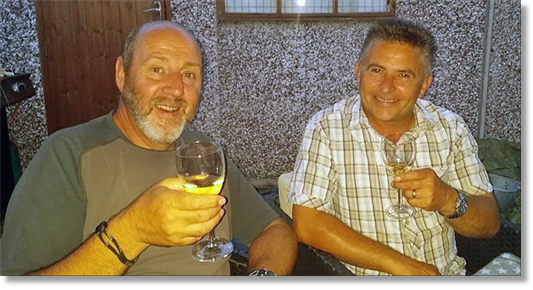


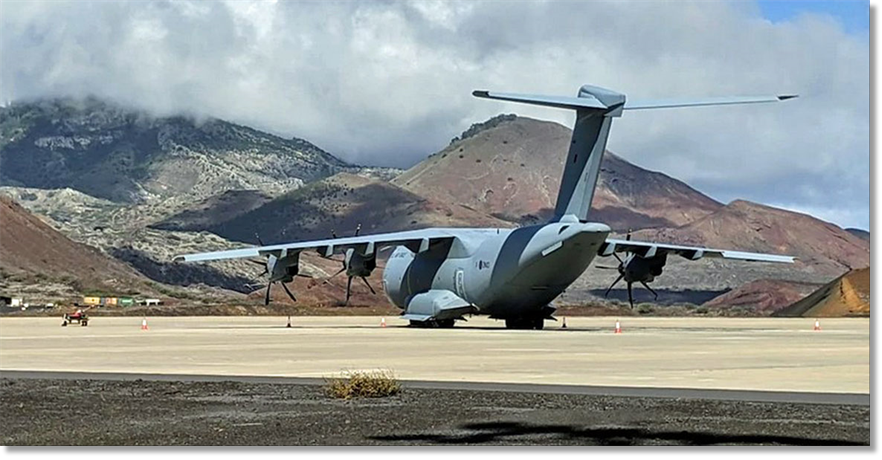
The ambitious plan is part of Operation BROADSHARE, a British military push to fight the pandemic overseas, and is aimed at keeping the island Covid free. But the latest launch was almost derailed when a faulty plane caused a 24-hour delay. “Timing of the vaccine is crucial” as once removed from refrigeration, the jabs must be administered within three days, the paper continues. But “with just 72 hours to transport the precious cargo”, the A400M Atlas “failed to start” in a malfunction that “crew on the ground were unable to sort”.
The cargo was speedily repacked onto a second plane, before departing the next morning, with 48 hours left on the clock. Flying Officer George Cox, who helped prepare the aircraft, said: “We are always agile and mobile in our responses, repurposing all of the equipment we have for defence and that does extend through to the cargo hangar.”
The jet landed on on the island’s “battered airstrip” on Wednesday, with front-line medical workers and the island’s five police officers then among the first to get their shots, The Sun reports. The remainder of the island’s 900 residents, “many of whom are military personnel or spies”, are due to get their vaccines within days.
Wing Commander Lee Roberts, who oversaw the delivery flight, told The Telegraph that “the guys are really proud, they are buzzing. You could just call it another logistical move but it’s more than that due to the vital strategic importance to the government,” he added.
The Telegraph

Subject: Re: UKMAMS OBA OBB #013121
Hi Tony,
Another great newsletter - thank you! I enjoyed the quick video tour of RAF Akrotiri - having served there in the late 80's I remember it well, although it seemed as if there were a lot more folk around back then.
I'd like to join Ian Envis in wishing Mark Attrill all the very best for the future, after such sterling service. Good call, Ian, and best wishes for the future, Mark. Well done, that man!
Cheers, Steve

Subject: RE: UKMAMS OBA OBB #013121
Tony,
Nice to see a photo of Mark Attrill (old and heavily photo-shopped no doubt), and to see at last he has retired. He and I were on the same IOT (#41-Nov 79 to Mar 80) but he graduated with another IOT which is something I always remind him about). We were on the same Movements Course and he came 1st to my 2nd by some ridiculous score like one or two marks overall. He went to UKMAMS and I went to AMS at Brize.
He was at my wedding in 1986 and to this day I have never met his wife (I am convinced she is a figment of his imagination as a result of this) as due to the pressures of being SAMO NHT, I could not get away to his wedding (1992?) thanks to my DSAMO injuring herself doing sport and I had to cover the PM going out from LHR. I had even sent my wife ahead to Yorkshire to be half way there!
We next met when out in Bosnia 10 years ago after which he continued to do these dodgy NATO jobs in Stavanger and then Estonia after having been in Rome before Bosnia. He is and always has been dreadful at keeping in touch and no doubt will ignore this missive (my email address has not changed in all the time I have had one Mark!).
Regards
Chris

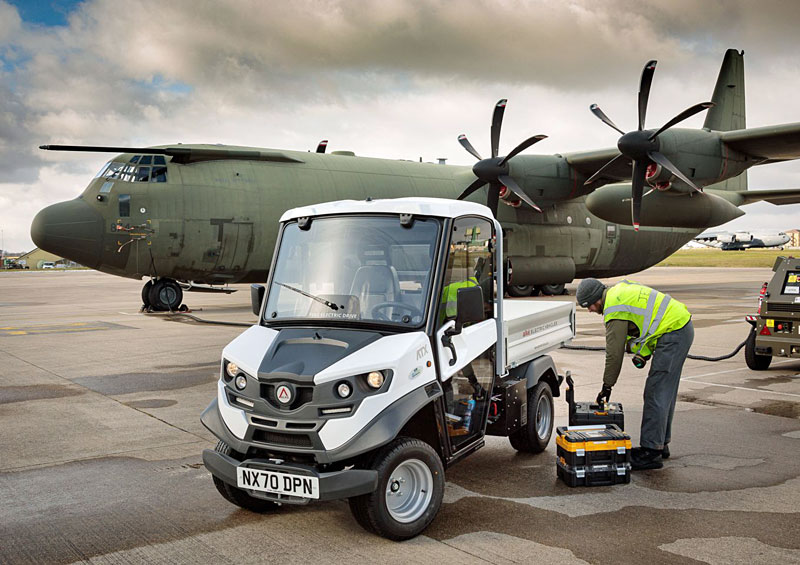
The trial provided the opportunity to assess the potential use of the new vehicles to replace the conventional diesel engine models currently used around the unit. This trial forms part of a series of initiatives as we strive to continue the move towards more sustainable and eco-friendly ways of working, whilst ensuring the Station meets its aspiration of reducing its carbon emissions and providing a healthier environment for those on the base and into the local community.
The three ULEVs delivered by ePowerTrucks were deployed across several areas on the Station including 47 Sqn, 99 Sqn and Ground Engineering Flight. A number of personnel where trained in the use and maintenance of the ULEVs and tasked to assess the vehicles as they undertook normal day-to-day activities and provide feedback on the performance of each.
The trial offered a great opportunity for personnel to see first-hand the advantages that these vehicles can bring over the current Mechanical Transport fleet. These included the employment of new technology to improve safety to both personal and equipment through the ability to programme speed limits and employ collision avoidance systems when operating around aircraft and equipment.
The trial will provide invaluable user input in helping to select the best ULEV to meet the demands of busy Main Operating Bases across the RAF.
raf.mod.uk

Subject: Tales from the Pandemic
It has been almost a year since the USA, Canada, the UK, Australia and New Zealand have been told that the Corona 19 virus was essentially a world wide pandemic. We all know what has happened world wide and how the USA has been quite lax in reacting to this. A certain president (45th), who by the way, will remain nameless, said that all was under control...
I live in a small town of approximately 50,000 on the Gulf of Mexico, in the state of Florida. My point is that the good people of this small city who I see working, shopping etc., do not wear masks, nor do the children. It's as if they're under the impression that they're super people and will not be affected by any of this. I nudge, ask nicely to put their masks on. They laugh and walk away.
Oh well, maybe my wife and I will outlive them all!
Jacques Guay


Subject: Where are they now?
Hi Tony,
I have not seen or heard of ex MAMS John Purkis for more than 20 years and it would be great if anyone knows of his whereabouts or contact details?
Last I know he moved to Holmfirth in West Yorkshire. I spent time with John on skiing holidays with his brothers and we had good times back in the 80's. It would be great to make contact again.
Cheers!
Martin

The supplies from New Zealand Ministry of Foreign Affairs and Trade included mother and infant kits, family hygiene kits, tarpaulins, solar lanterns, and water blasters.
The flight on Saturday followed another flight earlier in the week with supplies including water containers, water pumps, purification tablets and family kits.
We’re always ready to help our Pacific whānau [Māori = family] in times of need. Our thoughts are with the people of Fiji who have been affected by the cyclone.
Royal New Zealand Air Force
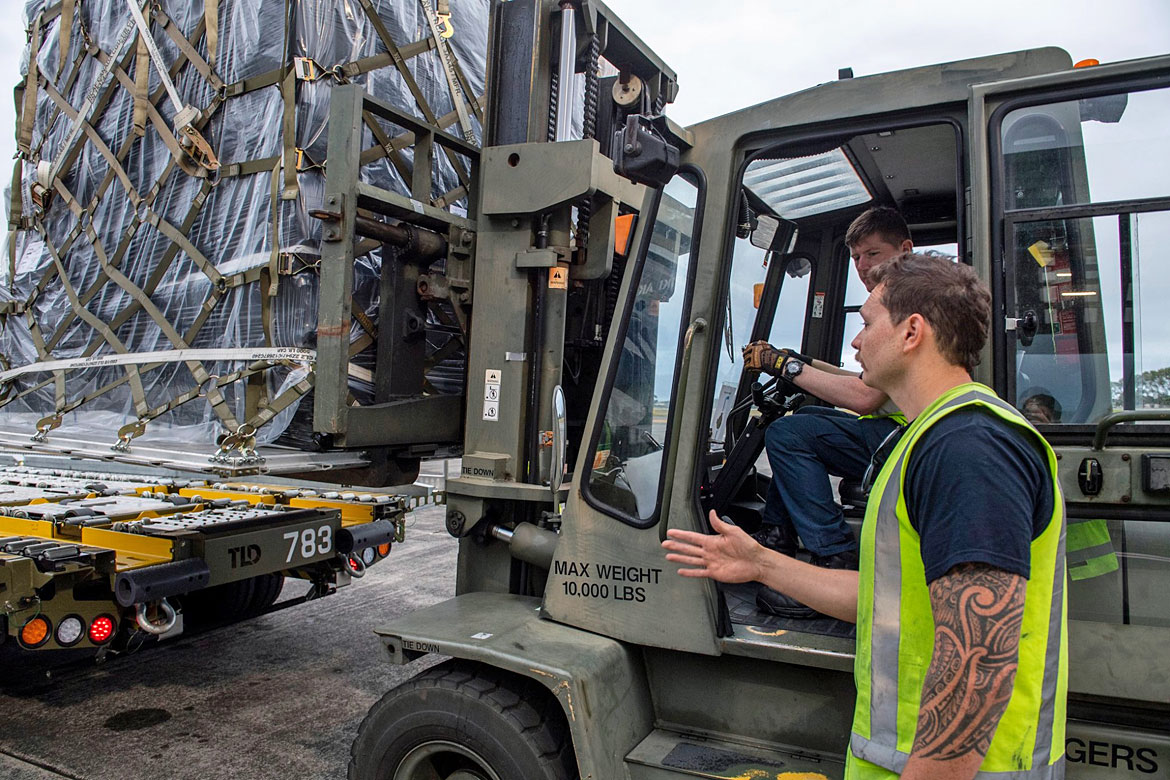
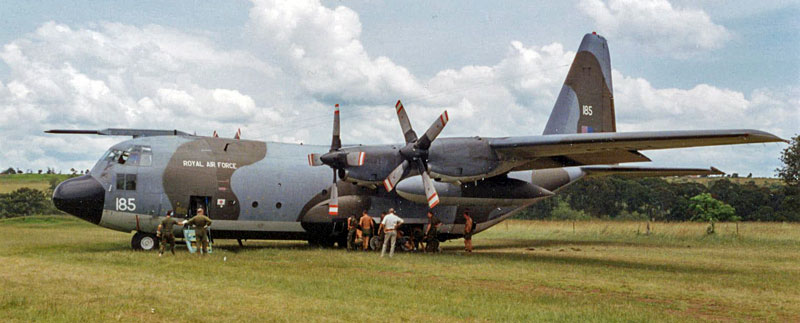
One day we were scheduled to fly up to a grass strip called Mweiga near the famous Treetops Lodge. The plan was to complete our deliveries so that we could arrive empty on minimum fuel, check the strip and then go to Nairobi to refuel. The Det Cdr (a Wg Cdr who shall remain nameless) decided he would like to fly. Off we went and ended up at Mweiga. A nice albeit narrow light aircraft strip which the Army assured us was good enough for a Herc in strip prep. The Army were keen to see if they could use it for resupply for their training exercises.
We duly completed a roller landing and then had a look to see if there were any ruts. All looked smooth so we decided to land. Good surface and slowing down nicely when the Captain decided that he need to turn the aircraft before it slowed right down. We eased to the right of the strip but were limited by a wire fence. Then the Captain decided to turn by applying a generous amount of nosewheel steering, we stopped dead across the strip. The Loadie [Mick Bedford] dropped the crew door which hit the ground. As you can see the main gear had been corkscrewed into the grass.
Fortunately the Army had been watching so came to help dig us out. One small problem was having to keep one engine running because the starter motor was dodgy. We could not be rescued because the strip was blocked! Having shifted the earth away from the gear we started up and despite full power forward and back no movement (altitude and temperature did not help). Slightly unnerving sitting with full power looking at a wire fence not far from the nose with many happy locals watching.
Shut down 3 engines again while we decided what next – bearing in mind the fuel load was now down to not a lot. The Army provided a solution with a bulldozer to which the aircraft chains were attached with the other ends around the towing eyes on the main gear legs. Start up again, ramp down with loadie signalling the Army driver. Full reverse with the bulldozer hauling for all it was worth when there was a loud bang – the chains had broken but at the same time the aircraft lurched up out of its grave and we just caught it before it backed off the field into the bulldozer.
Having escaped there was a very quick tidy up and departure to Nairobi. We called Nairobi and were told the airfield was closed for an hour! There was insufficient fuel to do anything more than land and taxy in. After a brief negotiation it was agreed that we could help ourselves but no ATC or Fire cover. That was one very relieved crew. The aircraft was, amazingly, undamaged and we got back to Mombasa just after dark.
Subject: Operation Restore Hope
Subject: Operation Restore Hope
Operating from Mombasa on 24 February 1993 – Wajir – Nairobi – Mweiga – Nairobi – Wajir – Mombasa.
We had completed one task, Mombasa – Wajir – Nairobi. On arrival in Nairobi our load was not ready so we left my second ALM and a MAMS crew on the ground to prepare our next aircraft load of 4 pallets and said we would be back in about an hour and a half.
Off we went to the small strip at Mweiga near the famous Treetops Lodge where Princess Elizabeth was holidaying and became Queen Elizabeth II following the death of her father, King George VI, February 6th, 1952.
As Colin Froude, the Sqn Ldr Co Pilot had stated, the Captain was a Wg Cdr, who will remain anonymous. After a flypast then a roll down the strip, it was decided that we would land. Landing was no problem, it was turning that caused the problem with the main wheels hitting soft ground.
When I opened the crew door, I saw that the main wheels had sunk into the ground, the pictures do not really show how bad it really was! It was decided to try reversing the aircraft out of the trench. Full power in reverse then forward, then reverse. We were not moving! The decision to shut down was made, however we knew we had previously had starting problems so No. 3 engine was required to stay running or we may not have been able to start up again. The job of sitting in the cockpit to monitor the running of the engine lay with Colin.
We were in luck as there was a small Army detachment based nearby who came to our rescue. They supplied spades so that we could try and dig ourselves out. They mentioned they had a bulldozer not far away and offered this to try and assist in pulling us out. Whilst we dug around and behind the main wheels the bulldozer was sent for.
On arrival we used the 25,000 lb floor points in the wheel well area to chain the aircraft to the bulldozer for a reverse pull out. The remaining three engines were started and put in full power; I marshalled from the open ramp area to the bulldozer driver to pull us out. This was successful but the chains broke just after we moved backwards out of the ruts we were in. We were able to move forwards, skirting the area we had been in and avoiding turning too sharply.
We prepared to go back to Nairobi to pick up my second ALM and MAMS and fly to Wajir fully loaded then return to Mombasa. The days tasking was now complete, time for a cold beer on the Wg Cdr!
Regards
Mick

Subject: C130 Garden Shed
Hi Tony,
Yes, I built a C130 garden shed! It was created from two regular old garden sheds that owners had considered beyond repair. They were free of charge to me from Facebook Marketplace as long as I collected them. The inspiration was mainly an idea to reuse my old Herc para door desk and build something to house my classic Lambretta and Mutt Motorcycle.
So, I simply jumped in feet first by dismantling the old sheds and jet washing the moss and old stain off. I then repaired various damaged and rotten panels by sacrificing two sides from the worst shed. Adding the para door and curved side required a single pitch pent style roof, so I chopped off the old pitch and raised one side. The pictures will show how I built the curved side that also made the inside very C130 like!
Initially I wanted the para door to open but it wasn't going to work and it would look odd opening outwards, so I created the ramp and door at one end. The green paint was Cuprinol Old English garden stain and it matched the door perfectly, the inside colour was olive shade and I used dark grey to create the floor pattern.
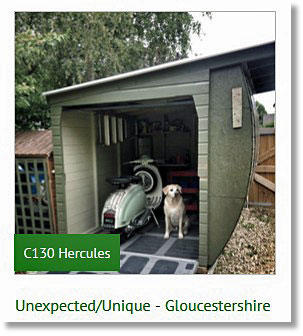
The shed is entered in the Shed of the Year Competition 2021, and also another more well known TV show, George Clerk's Amazing Spaces.
More pictures of the build process and semi finished shed can be found here http://www.readersheds.co.uk/share.cfm?SHARESHED=7296
Regards
Tony
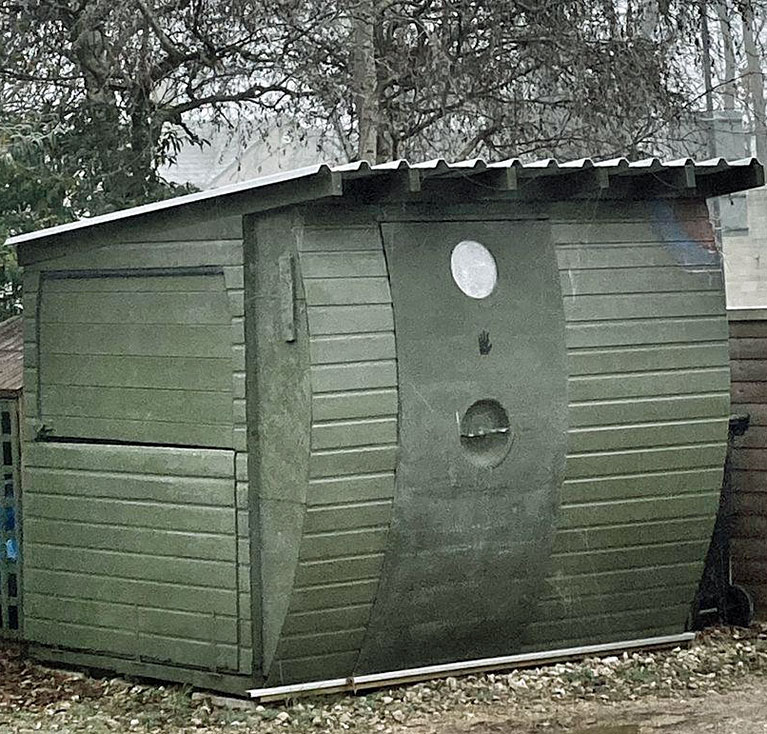
Wing Commander Stuart Wheal, Commander of the CRS said, “We have 21 Royal Australian Air Force personnel out here, primarily from 382 Squadron". “The team is made up of different categories and musterings – we have Chefs, Physical Training Instructors, Personnel Capability Specialists, Ground Defence Officers and Logistics Officers to name just a few"
Wing Commander Wheal said. “Our mission was to work alongside our US and Japanese counterparts to plan and execute the rapid opening of this old airfield to allow humanitarian aid to be delivered.”
Exercise Cope North strengthens the relationship between Australia, the US and Japan and helps enhance humanitarian assistance and disaster relief efforts in the Indo-Pacific region. Cope North 21 was held in Guam, 3-19 February.

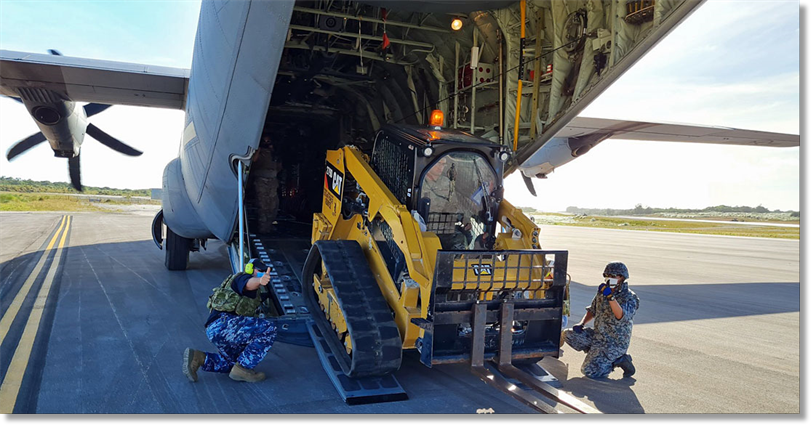
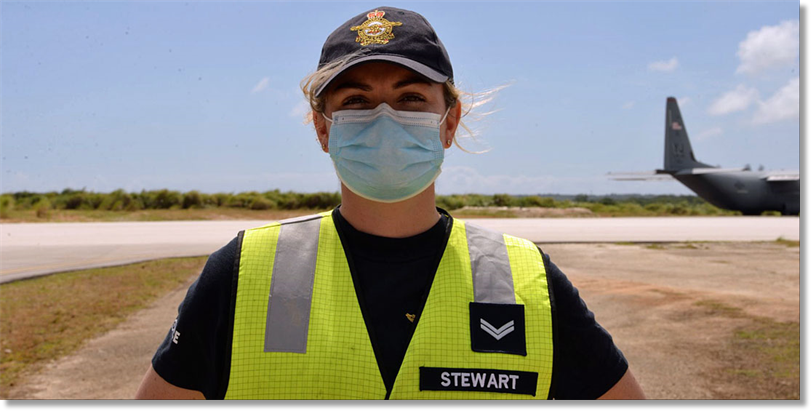
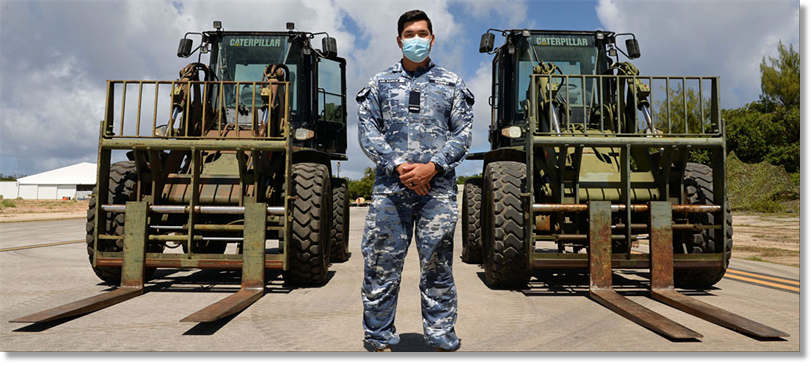
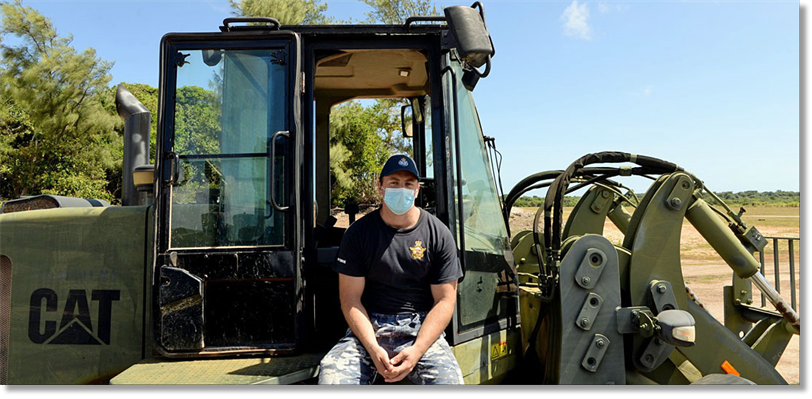


Subject: Health and Safety
I recall in the late sixties we regularly had aero engines coming in by road to Lyneham in big heavy wooden crates. Quite often, when unloading with the forklift, the crates would be unbalanced with a real risk of slipping off one side of the forks. No problem - a couple of bods stood on the other end of the crate to balance things up - it wasn't rocket science back then, but nowadays would be greatly frowned upon!

Subject: Health and Safety
Well its got to be H & S, or the lack of it when I first joined up in 1980.
Where do I start?
I think in my mind the worst of it I saw was at Brize Norton from 1982 onwards, my second posting after Coltishall. Hangar 49 was a death trap with open pallet pits, the deadly pallet train which ran up and down the middle of the hangar and the surface of the hangar which was like a skid pan. That train was a accident waiting to happen and on several occasions it succeeded.
But I think the lack of the proper ACHE to use on the ever-increasing array of aircraft which were visiting Brize caused the biggest problems for us, especially during the Falklands War. One particular incident I remember is the visit we had from a Flying Tigers B747 Cargo aircraft which was dispatching Hunter Fighter jets to a certain South American country as a favour; I gather for other favours offered by them to us during the war.
The Movements Squadron had nothing which could reach the front sill of the B747, so a cunning plan was devised which involved lashing AA docking to to the bed of the Condec after which it just about reached the sill height.
From memory, the Hunter aircraft were on double or triple pallets, fuselage on one set, wings etc., on the other. Each set of pallets were ferried out on one Condec in normal configuration which was then married up to the Condec aligned to the B747.
This is where it gets daft. Two "volunteers" came forward to secure themselves to the sides of the Condec/AA docking using P-Strops and were subsequently lifted into the air along with the load, dangling for a better word, from each side of the Condec. This was to enable them to nudge the pallets along from the back and sides of the Condec until those pulling on the sill managed to engage the pallet with the automated rollers.
To complicate matters even more there was a pretty strong cross wind which was causing the Condec to sway, so it was a bit like target practice waiting for the Condec to align with the aircraft before the big push.
Nearly 40 years to this day it still sticks in my mind, I can even remember one of the two on our shift who went up with the Condec, it was Phil Groves.
This particular event and the fact we had the T*500's entering service without the correct ACHE sticks in my mind. I know a lot of folk moan about H & S in today's world, but there is certainly is a place for it. I look back now I have turned 60 at those younger days of mine in my early 20's and think how the hell did I/we survive?
Regards,
Stephen
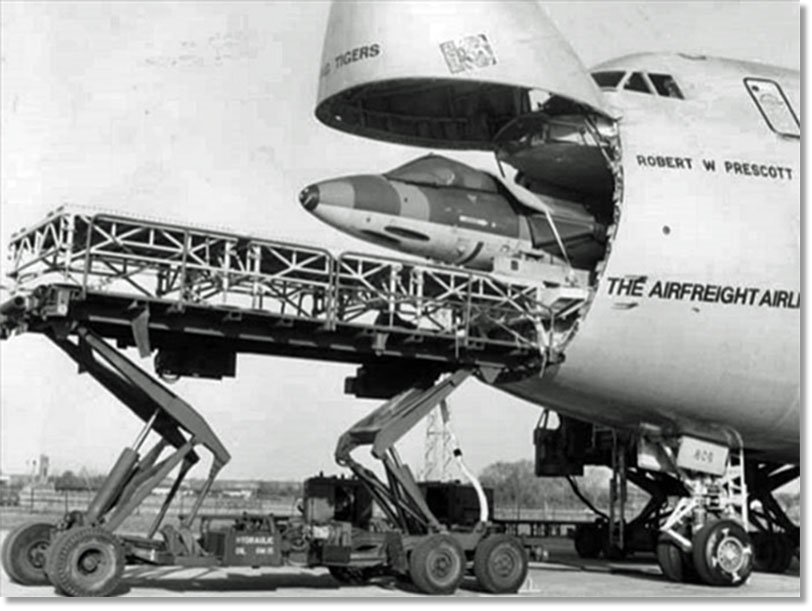

“Over the past 17 years RAAF firefighters have worked with crews from Canada, United Kingdom, Netherlands and New Zealand,” Flight Sergeant Gard said. “This has not only provided lifelong friendships from around the world, but provided RAAF members with an array of different experiences and firefighting techniques that they have been able to share once back in Australia which benefits the entire mustering.”
RAAF firefighters have responded to a variety of events in the Middle East, from building fires and motor vehicle accidents, to hazard chemical incidents and emergencies involving coalition aircraft. Many of these emergency responses involved the Panther and its fire suppression capabilities. Flight Sergeant Gard said numerous firefighters who supported Australian operations in the Middle East had acknowledged their experiences on deployment as the pinnacle of their careers, with many of them returning into theatre multiple times throughout the ranks.
“It’s been an absolute privilege for all of the firefighters over the years to have been able to take our skills into an operational environment and support the ADF’s mission,” Flight Sergeant Gard said. “It is a skill you do not want to have to use, but having our staff in location was reassurance for many which makes us all proud.”
While Joint Task Force 633’s sole firefighter will return to RAAF Base Williamtown, the Panther tender will be flown to RAAF Base Amberley.
Firefighting responsibilities at Camp Baird will continue in a non-uniformed capacity, with SERCO providing a contract firefighting capability.
defence.gov.au
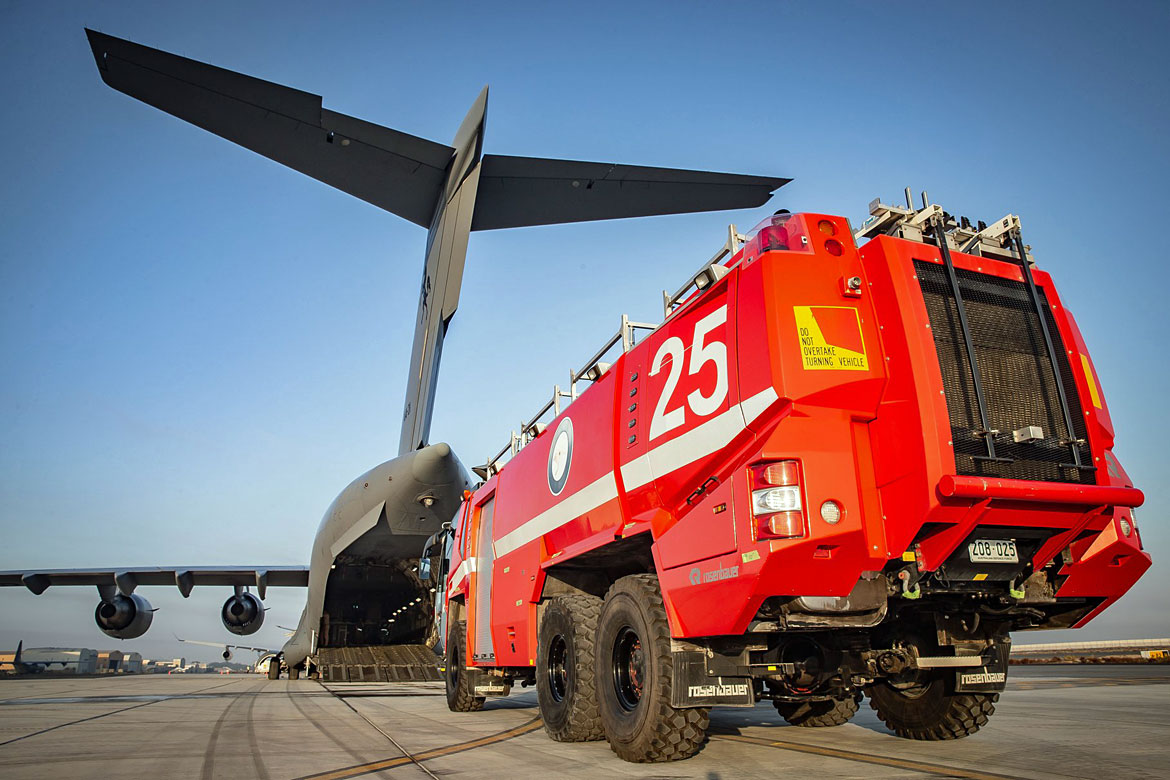

Subject: 60KVA Toppled!
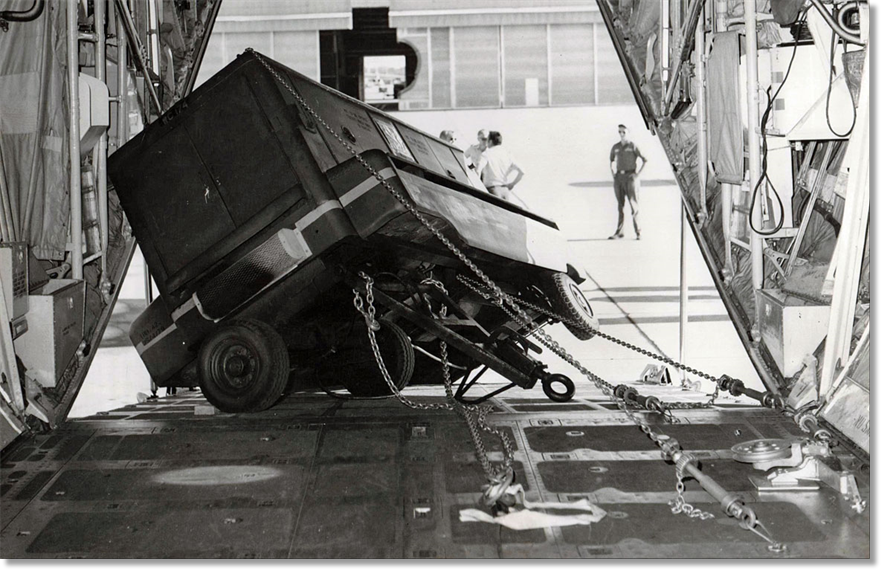
Tipping a Houchin KVA60 - Jacksonville Florida 1995. It seems like no one wants to take the blame for this little mishap. It occurred when one of the loading team placed a chock against one of the front steering wheels as the Houchin rolled down the ramp of the C130.

Subject: Lack of PPE and Manual Handling Instruction.
I Wonder how many ex RAF Movements blokes who attended the Junior Movements Course in 1967/8 pictured, have bad backs and knees ?
I left the RAF in 1989 joined an International Facilities Management Company as a Key Account Manager to 2007. We were bombarded with Health and Safety Instruction particularly regarding Manual Handling and PPE.
1. A record was kept with the Instructor signing personal records that instruction had indeed taken place.
2. The employee had to sign that he or she had received instruction regarding Manual Handling and PPE.
3. The employee had to sign that the instruction would be adhered to whilst wearing and using the PPE, when required.
All different in the RAF with heavy Items expected to be moved by hand without instruction on how to move them. Knee protectors would have come in handy when loading/offloading items from belly holds of transport aircraft.
During all training courses I ever attended, Junior, Advanced, UKMAMS or 4 years instructing on the Movements School, manual handling was never mentioned. Perhaps if these issues mentioned had been addressed the successful injury claim made in 2010 to the Service Personnel and Veterans Agency would not have been necessary.
So, the medication is taken on a daily basis and the pain continues. Hope things have improved since 1967/8.
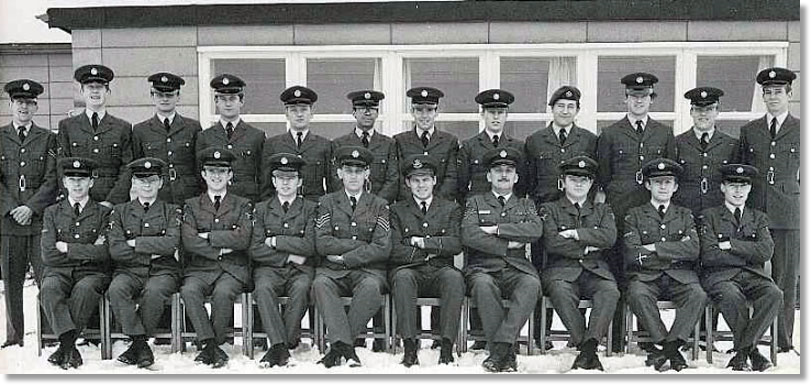
Called the Aeromedical Single Isolation Bio-containment Unit (ASIBU), this new capability allows for the safe isolation of patients thought to be contagious while allowing medical experts to provide direct treatment. In effect, it allows medical staff to treat patients with virtually zero possibility of transmission of infection in either direction, all while being transported in an aircraft.
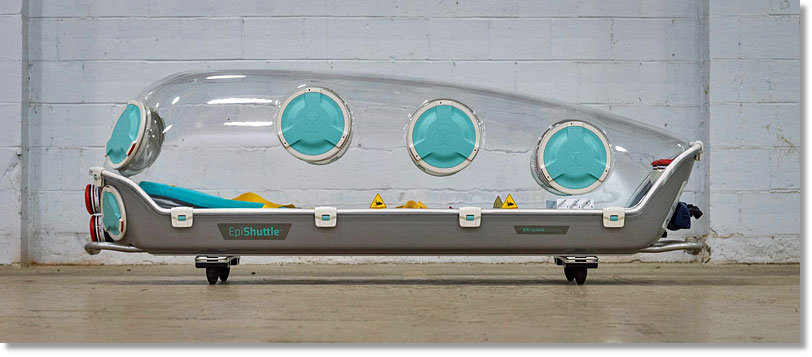
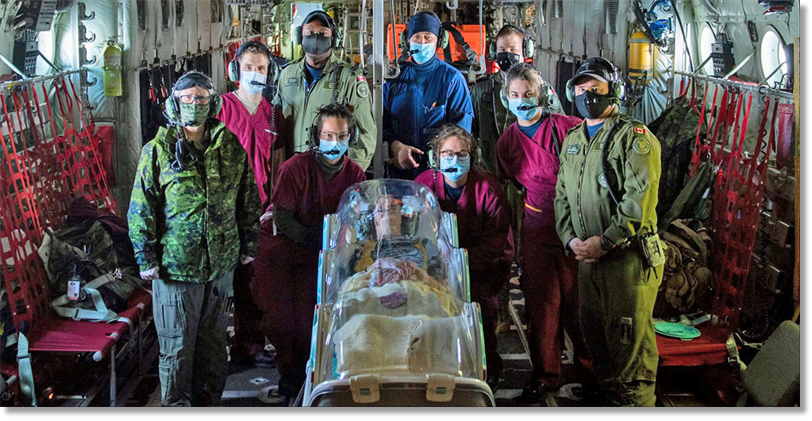
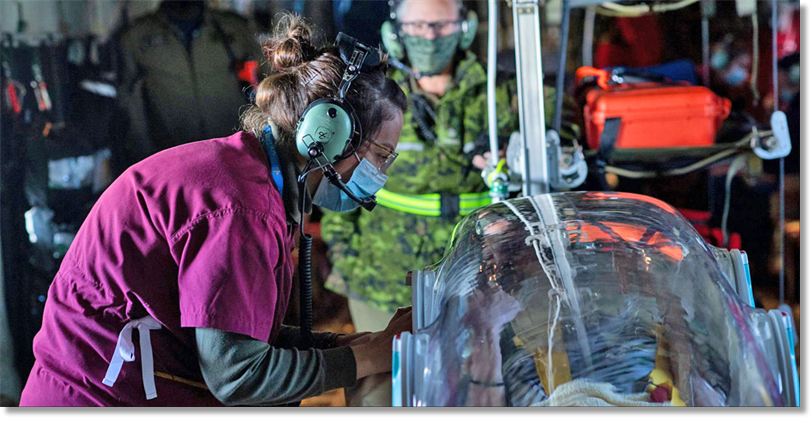
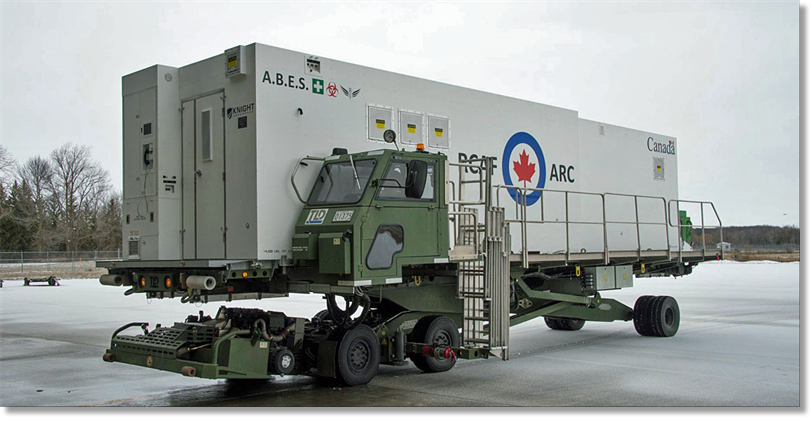
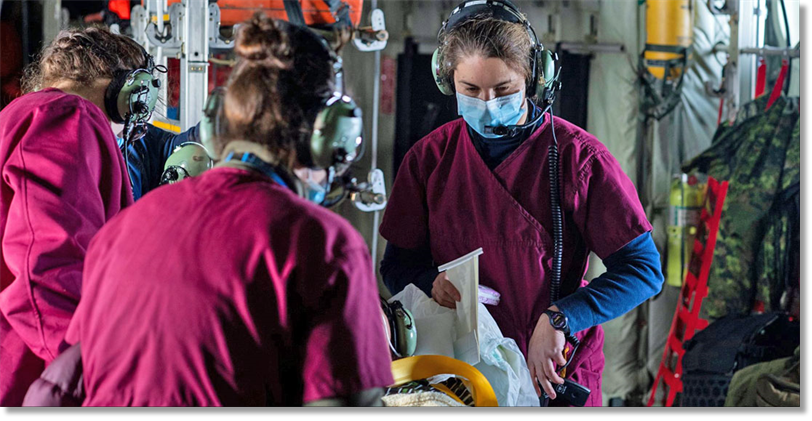
RCAF
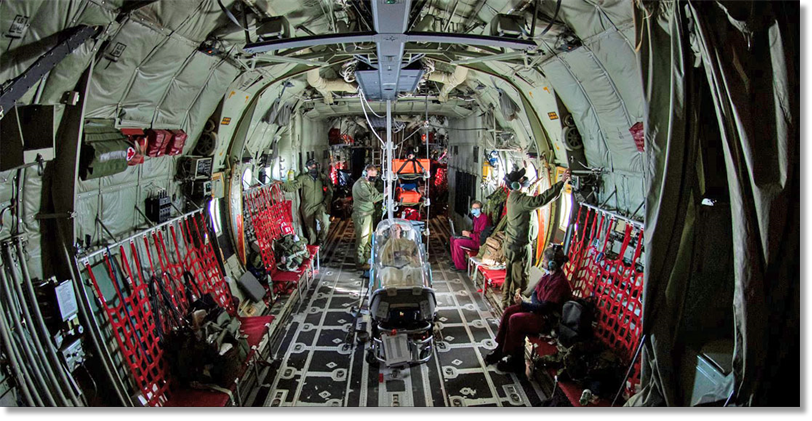
Subject: Now it can be told
I wonder whether any readers ever served - either with me or before or after my time – as a member of the RAF Mobile Explosives Team?
The establishment was 2 junior officers and 2 sergeant movers, although the second officer post was often gapped. We had an office at 11 MU, RAF Chilmark, not far from Salisbury in a beautiful part of the Wiltshire countryside. But we spent almost all of our time on the road, living on Rate 1s, moving explosives by sea in and out of commercial ports around the UK, mostly on behalf of the US forces (their explosive storage footprint in Europe being pretty big during the Cold War). I was there from Dec 83 to Mar 86.
Chilmark has long since closed, but was the RAF’s explosives storage depot and utilised a network of caves and tunnels that had originally been Roman quarries to store a wide range of explosives, including a lot of 1,000lb bombs. The quarries had continued in use for many years and had produced much of the stone used to build Salisbury Cathedral. If memory serves, the odd block was still extracted during my time there for repairs to the Cathedral. The Officers’ Mess had been the Quarry Master’s house and the Station had its own railway line and chalk stream for fly fishing.
Despite being granted the grand-sounding title of ‘Government Authorised Explosives Representatives’, none of the team members considered ourselves to be particularly well qualified or experienced for what was an unusual job. We had all completed the Explosives Course at Hereford – what my good friend Steve Harpum accurately described as a 2-week course, crammed into 6 – but neither that nor our movements training really covered the nitty-gritty of how to inspect ships, stow their cargoes, work out how much of what type of explosives could be allowed in the port at any one time without exceeding the explosive licence, etc.
Working within the docks with stevedores, shipwrights, seamen, train crew and truckers gave rise to much amusement and challenge; I was never quite sure that they knew what to make of us. Unusual memories include gunboats of the Irish Navy, which we would store with explosives in Barry Docks, always followed by an onboard party featuring barrels of Guinness and bottles of Bushmills provided by the crew and the attendance of female members of the local RN Reserve unit, coordinated by us.
I won’t try to list all of the names of colleagues from that time, least I give offence by leaving anyone out. However, it would be great if anyone who worked on the team was to identify themselves through Tony’s Newsletter and, perhaps, provide a few anecdotes of their own. That said, I must mention one name: Merv Muir (RIP). Merv was a warm, amusing and generous person, and an absolute delight to both work and spend off-duty hours with. I know that he is sadly missed by all who knew him and I am reminded of him every time that I am at my desk where sits a very nice desk-tidy with lamp, made of shell casings and sporting an engraved plaque that Merv made for me as a leaving gift.
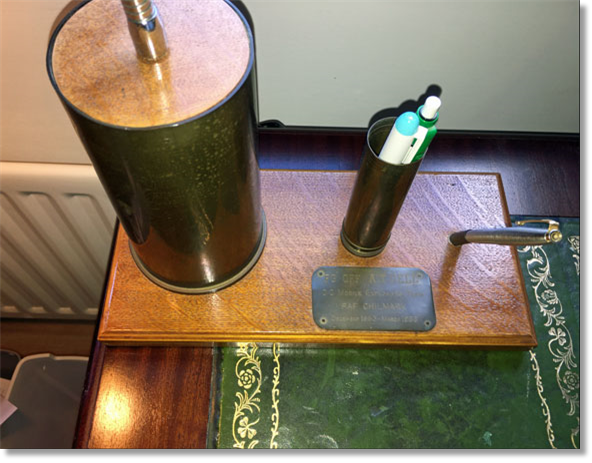
Subject: Heath and Safety

Health and Safety - in the beginning it became somewhere to dump the less useful and intelligent members of staff, who then proceeded to grow vast empires and demolish whole forests to aid the publication of meaningless "DO NOT DO THIS" lists.
I like reading, so I read everything, especially those little H&S notes. Val bought some rubber gloves for use when washing and cleaning - the note read, "Do not use near liquids" I kept this.
The pull cord in my bathroom lost the weight at the end, Val bought me a new one - the note read, "Keep out of reach of children." I kept this.
During lockdown I have been enjoying my Railway Modelling, which as David Powell and others will know can be the most frustrating of hobbies.
One of the consequences of the lockdown is that all Model Railway Exhibitions have been cancelled (amongst everything else!). The Gauge O Guild held a very successful virtual exhibition last September. Our Spring Show will also be virtual, during this last lockdown I have learnt the art of producing home videos and some new words and phrases.
So, if any of you have time to spare, our next internet virtual show will be held on 6th March from 0930 to 1700hrs and it is free to all at www.gaugeoguild.com you may even find it interesting and want to join in.
Many cheers to all, keep safe and sane.
Harold Jones.

Subject: Where are they now? Flt Lt Barry Shevlin
Barry Shevlin was a Team Leader on UKMAMS during the 70s. Many trips occurred where he and I drank too much and smoked too much "down route". Las Vegas comes to mind where we really drank and smoked too much, over a three week period.
He was posted to RAFG HQ at Rheindahlen early 80s where I came across he again. I got to know him pretty well as we used to talk about the trials and tribulations regarding bringing up very young children. It was remarkable an officer would confide in a lowly Corporal about such matters. It was apparent he was just as "fragile" as the rest of us and appreciated advice.
For a ZOB he was a bloody good bloke. Wonder what he is doing now?
Phil Smith
Subject: Health and Safety
Hello Tony,
I am sure that I have a lexicon of tales to relate on the subject of H&S but two spring to mind instantly.
The first - from February/March 1984, involved the recovery of a Buccaneer Squadron from Exercise RED FLAG at Nellis AFB. We were presented with several loads, none of which were particularly well prepared. We had anticipated this based on the feedback received from the team that had performed the outload from Laarbruch some two months earlier. What we had not anticipated was the lack of US-sourced ACHE at Nellis AFB that evening which resulted in the need to re-role the aircraft from roller-conveyor to flat floor and to then manhandle Special-to-Type containers, housing AN/ALQ-101 ECM Pods and AN/AVQ-23 Pave Spike Designator pods into the aircraft. Each container weighed upwards of 400-500 lbs and these then had to be stacked. Fortunately we had deployed with a Team + (so there were nine of us with the Loadie) - it was truly back breaking work and it was a miracle none of us suffered serious injury at the time.
The second - was on one of those well-documented tales relating to the movement of the Red Arrows Aerobatic Display Team. In my particular case it was the late Tony Saw's and my intervention in preventing the Red Arrows Ground Support team from nudging a bespoke wheeled tool cabinet up the ramp with nothing more than a Land Rover equipped with a wooden batten strapped to the bumper, while we were distracted with securing the first part of the load at the front of the aircraft. The tool cabinet, at 6' plus high, was already top heavy and mounted on a trolley with a narrow wheelbase and one could see the potential for it to topple in an instant. No guiding strops, no chocks, no winch, nothing. How times have changed (thankfully). Sorry...no photos. Perhaps Mike Stepney (Snr) could oblige?
Cheers
Mark
Subject: RE: A Request
Hi Tony,
In response to Mark Attrill’s suggestion of Red A support task photos, regretfully, I do not have any photographic record of that particular loading /unloading activity.
My own experience with Red A support was documented in a past article, and much as I would have liked to have photographic evidence of the dangerous loading techniques, my full focus on that particular route check, which had a very tight flight schedule, was to get the initial load on and tied down safely, whilst directing and supervising the untrained ad-hoc loading team, consisting mainly of ground tech tradesmen. No iPhones or digital cameras in those days!
Pre summer of 1987, the mention of Health and Safety and load/unloads of Red A C130 Support a/c, was definitely a contradiction in terms.
Best Regards
Mike

Air Commodore Godfrey joined the RAF in 1991 and has been a fighter pilot most of his career. A former Station Commander at RAF Lossiemouth, most recently he was responsible for the planning and employment of coalition air and space power across the Middle East within the US Air Force Combined Air and Space Operations Centre.
Space Command will be a Joint Command, staffed from all three Services of the Armed Forces, the Civil Service and key members of the commercial sector at RAF High Wycombe.
Based at RAF High Wycombe, Space Command will be a Joint Command, staffed from all three Services of the Armed Forces, the Civil Service and key members of the commercial sector. It brings together three functions under a single 2-Star military commander: space operations, space workforce generation and space capability.
raf.mod.uk
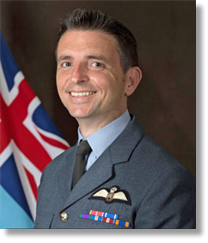
Subject: Small Business - Absent Friends Glasses
Hi Tony
I'm Alan 'Boot' Pratt's stepson and I'm currently doing some fully engraved Absent Friends glasses.
They are a good quality heavy whiskey tumbler with a fully engraved image.
Would it please be possible for you to forward this on to your members.
Cost is only £12.50 per glass plus £3.20 p&p.
They can order via email (link in flags above), or find me on Facebook.
I have attached a couple of images of relevant glasses I have already made.
Many thanks
Kind regards
Chris Jepson
07903 886578
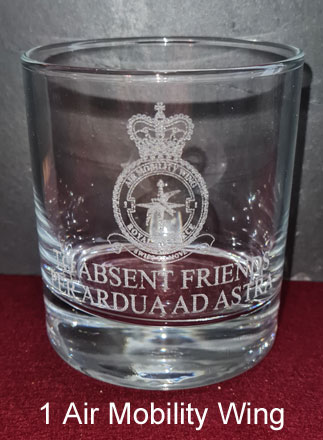
By Ian Berry
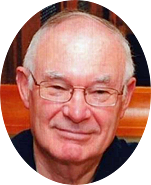
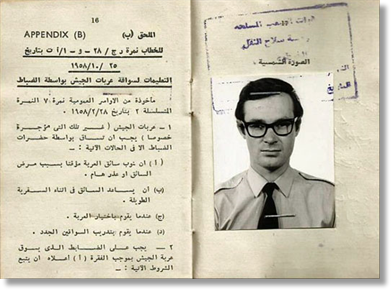
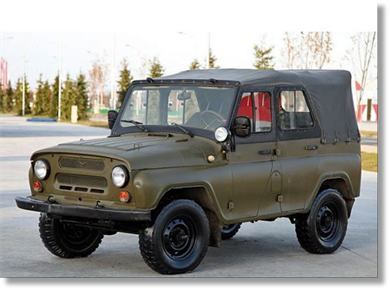
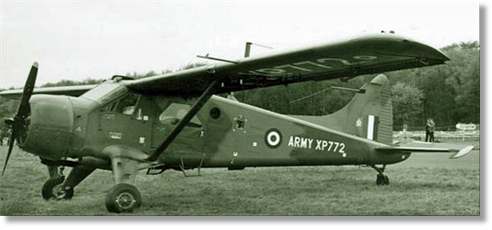
Quite quickly we settled into a routine and also ‘gelled’ both work and socially as we were in each other’s company 24/7. With our willingness to get involved in any task I felt we were showing UKMAMS in a good light. The flights to and from Wau continued with all kinds of loads being taken South and soon we were also bringing back some soldiers for their R&R. Two weeks into the detachment and a Belfast called in with some freight before continuing on to Ethiopia. The MAMS team on board included my good pals ‘Dinger’ Bell and Syd Avery. The aircraft ramp was full of timber which was required by the Royal Engineers at Tonj.
To get things in perspective, the Andover usually had a payload of around 16,000 lbs but size was also to be considered. It took us four trips to move what was carried on the ramp of the Belfast! By week 3 we were asked by the Army if it was possible to fly straight into Tonj? Seemingly the road between Wau and Tonj was nigh on nonexistent and they had already broken several springs and an axle on their vehicles during the transit. They also said there was an existing tarmac covered runway at Tonj from which they operated their AAC (Army Air Corps) Beaver and Sioux helicopter. We agreed to fly over and have a look next trip down.
Once again after we had completed our turnaround in Wau we then flew on to Tonj. We flew over the site, which in fact was flattened and bulldozed elephant grass and then completed a couple of practice approaches. On the third go we landed and although a little bumpy, all was good. As soon as we applied reverse thrust the world turned dark! Eventually it lightened and we were able to open the ramp. The aircraft was covered in an inch or two of fine dust. As I looked further afield I was amazed to see literally hundreds of local natives who had appeared from nowhere to look at this big metal bird!
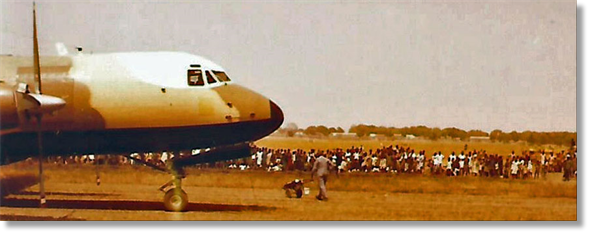
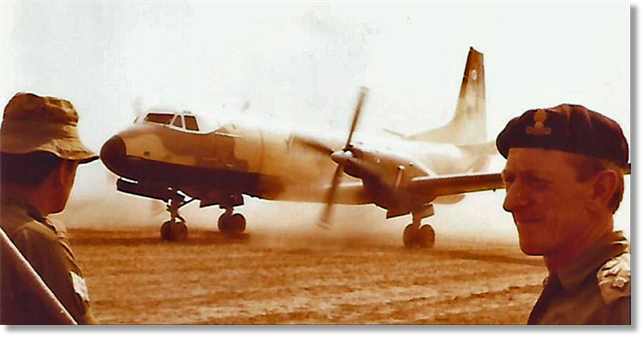
Even though we were flying in fresh rations for them, they were supplementing this with freshly caught game, namely antelope or other indescribable species. Eventually we bid our farewells and took off to head back to Khartoum. From this day on we used this runway at Tonj instead of Wau whilst the AAC continued to use the semi-finished tarmac strip. To differentiate they were referred to as “Tonj Gatwick” and “Tonj Heathrow”.
When we arrived and shut down we were greeted by a weird site of approximately 8 feral cats that came towards the aircraft and sat in a half circle outside the side door. Nonplussed, we ignored them and eventually they wandered off. However, later in the day when we were preparing to depart back to Khartoum, a Sudan Air F27 landed, taxied in and shut down. The cats again appeared and did the same routine and formed a half circle. This time the side door opened and a stewardess started to scrape empty the plastic in-flight meal trays and the cats ate the contents!
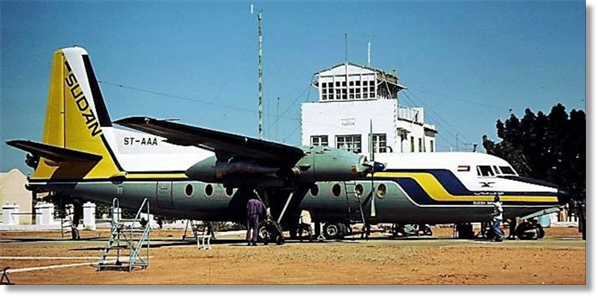
As the detachment progressed the Boss announced to us that our hosts had asked if we could assist with the delivery of a rotor head for one of the MIL8 helicopters which had gone u/s in Wau. “No problem” said the Loadmaster. “Good” said the Boss “as there will also be two Russian Air Force Techies accompanying it!”... The Loadmaster then moaned “But how can we document them?”, “Smith and Jones” replied the Boss.
So it was we took two Soviet Airman on a trip to South Sudan. They were like chalk and cheese and it was obvious one wanted to talk and the other was a typical political type. Eventually we did manage to separate them and the talkative airman was plied with coffee and shown around the flight deck where he had a ball of a time. This was my very first In summary, this was a memorable detachment with some fantastic flying into some contact with the Russians. 12 years later they would be photocopying my ID card at Checkpoint Bravo on the way into West Berlin!
Unfortunately, as the weeks progressed, the temperatures got ever hotter and the aircraft started to suffer from the WAT factor. Weight, Air & Temperature. The hotter it got the less we could carry and the longer the take-off run. Each trip we were starting earlier and earlier during the cool of the day. As the detachment was starting to head towards the end I happily agreed with the Detachment Commander that we two should return to the UK in advance, the majority of the task being completed.
Consequently we departed Khartoum on a scheduled BOAC Super VC10 (G-ASGO). This aeroplane itself sadly had less than a week to live when it was destroyed on the ground at Schiphol Airport, Amsterdam, by fleeing hijackers on 3rd March 1974.
In 2011 the area we operated into was granted independence and called South Sudan. Unfortunately, the Civil war still continues.
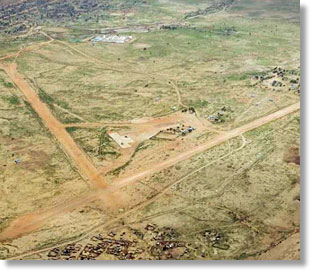

Welcome to the OBA!

Subject: Guest Book Entry
Good afternoon everyone this is a message to any ex-mover who may remember me - Steve Davey ex A Shift Traffic, RAF Brize Norton from 1971-1973.
I was posted in November 1973 to Bruggen shortly after Trade Group 18 was spilt. I have been retired since December 2015, I live in Tadcaster, North Yorkshire.
It is with a touch of sadness that I have noticed that some former colleagues are no longer with us, Gus Cobb, Graham Flanagan and big Dave Woods to name a few.
Best regards to all.
Steve Davey
Subject: OBA Membership
Hi Tony,
Thanks for your very informative and interesting note and for the opportunity of joining your movements association which seems to have a very large membership.
I don’t think our paths have crossed before, but I’m sure we’ve shared some interesting experiences. I joined the RAF in 1953 as National Service but extended for 3 years tempted by the opportunity of serving in Singapore and Malaya. I left as a Corporal in Jan 1957 and after a year in ‘civvy street’ came back in on a commission.
I haven’t sent a ‘Bio’ but for those who might be interested I published a book in 2019 entitled “A Footprint in Time” which is published by Xlibris and available on Amazon where comments about the book have been made by other readers. It covers my experiences set against world events of the time, many of which I’ve been involved in.
As I’ve already indicated, I would like to be part of the organisation and my “Movements” background is as follows:-
Air Movements & MAMS Aden - 1961-1963
Senior Movements Officers Malta - 1967-1971
MoD Head of Mov Ops - 1975-1978
Command Movements Officer Germany - 1980-1985
Keep safe and keep in touch,
Brian
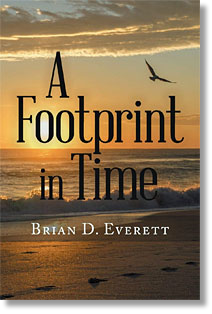
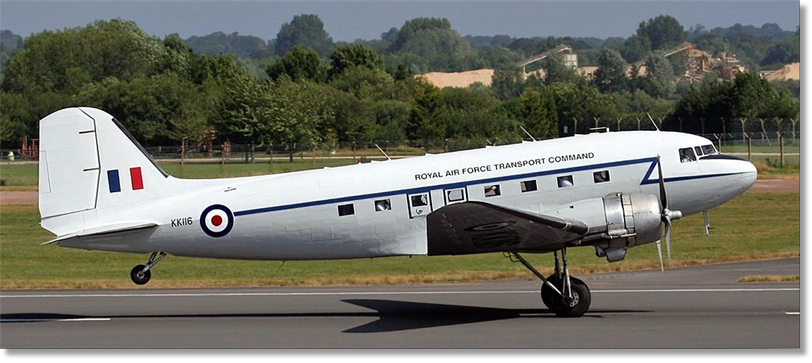
With its distinctive nose-up profile when on the ground and extraordinary capabilities in the air, it transformed passenger travel, and served in just about every military conflict from World War II onwards. Now the Douglas DC-3 - the most successful plane ever made, which first took to the skies just over 30 years after the Wright Brothers' historic first flight - is to carry passengers in Britain for the last time.
Romeo Alpha and Papa Yankee, the last two passenger carrying Dakotas in the UK , are being forced into retirement because of - yes, you've guessed it - health & safety rules. Their owner, Coventry-based Air Atlantique, has reluctantly decided it would be too expensive to fit the required emergency escape slides and weather radar systems required by new European rules for their 65-year-old planes, which served with the RAF during the war. Mike Collett, the company's chairman, says: "We're very saddened. The end of the passenger-carrying British Dakotas is a sad chapter in the story of the most remarkable aircraft ever built, surpassing all others in length of service, dependability and achievement."
It has been a luxury airliner, transport plane, bomber, fighter and flying hospital, and introduced millions of people to the concept of air travel. It has flown more miles, broken more records, carried more passengers and cargo, accumulated more flying time and performed more 'impossible' feats than any other plane in history, even in these days of super-jumbos that can circle the world non-stop. Indeed, at one point, 90 percent of the world's air traffic was operated by DC-3s. More than 10,500 DC-3s have been built since the prototype was rolled out to astonished onlookers at Douglas's Santa Monica factory in 1935.
With its eagle beak, large square windows and sleek metal fuselage, it was luxurious beyond belief, in contrast to the wood-and-canvas bone shakers of the day, where passengers had to huddle under blankets against the cold. Even in the 1930s, the early Dakotas had many of the comforts we take for granted today, like on-board loos and a galley that could prepare hot food. Early menus included wild-rice pancakes with blueberry syrup, served on bone china with silver service. For the first time, passengers were able to stand up and walk around while the plane was airborne.
But the design had one vital feature, ordered by pioneering aviator Charles Lindbergh, who was a director of TWA, which placed the first order for the plane. The DC-3 should always, Lindbergh directed, be able to fly on one engine.
Pilots have always loved it, not just because of its rugged reliability but because, with no computers on board, it is the epitome of 'flying by the seat- of- the- pants'. One aviator memorably described the Dakota as a 'collection of parts flying in loose formation', and most reckon they can land it pretty well on a postage stamp.
As a former Pan Am stewardess puts it: "From the windows, you seldom look upon a flat, hazy, distant surface to the world. "Instead, you see the features of the earth - curves of mountains, colours of lakes, cars moving on roads, ocean waves crashing on shores, and cloud formations as a sea of popcorn and powder puffs.'
But it is for heroic feats in military service that the legendary plane is most distinguished. It played a major role in the invasion of Sicily, the D-Day landings, the Berlin Airlift, and the Korean & Vietnam wars, performing astonishing feats along the way.
When General Eisenhower was asked what he believed were the foundation stones for America's success in World War II, he named the bulldozer, the jeep, the half-ton truck, and the Dakota.
When the Burma Road was captured by the Japanese, and the only way to send supplies into China was over the mountains at 19,000 ft, the Chinese leader Chiang Kai-Shek said: 'Give me 50 DC-3s, and the Japs can have the Burma Road."
In 1945, a Dakota broke the world record for a flight with an engine out of action, travelling for 1,100 miles from Pearl Harbor to San Diego, with just one propeller working.
Another in RNZAF service lost a wing after colliding mid-air with a Lockheed bomber. Defying all the rules of aerodynamics, and with only a stub remaining, the plane landed, literally, on a wing and a prayer at Whenuapai Airbase.
Once, a Dakota pilot carrying Paratroops across the Channel to France heard an enormous bang. He went aft to find that half the plane had been blown away, including part of the rudder. With engines still turning, he managed to skim the wave-tops before finally making it to safety.
Another wartime Dakota was rammed by a Japanese fighter that fell to earth, while the American crew returned home in their severely damaged - but still airborne - plane, and were given the distinction of 'downing an enemy aircraft'.
Another DC-3 was peppered with 3,000 bullets in the wings and fuselage by Japanese fighters. It made it back to base, was repaired with canvas patches and glue, and then sent back into the air.
The DC-3's record has not always been perfect. After the war, military-surplus Dakotas were cheap, often poorly maintained, and pushed to the limit by their owners. Accidents were frequent. One of the most tragic happened in 1962, when Zulu Bravo, a Channel Airways flight from Jersey, slammed into a hillside on the Isle of Wight in thick fog. All three crew and nine of the 14 passengers died, but the accident changed the course of aviation history. The local radar, incredibly, had been switched off because it was a Sunday. The national air safety rules were changed to ensure it never happened again.
'The DC-3 was, and is, unique," wrote the novelist and aviation writer Ernest Gann, "since no other flying machine has cruised every sky known to mankind, been so admired, cherished, glamorized, known the touch of so many pilots and sparked so many tributes. It was without question the most successful aircraft ever built, and even in this jet-age, it seems likely that the surviving DC-3s may fly about their business forever."
But after their retirement, there will still be Dakotas flying in the farthest corners of the world, kept going with love, dedication and sheer ingenuity. Nearly three-quarters of a century after they first entered service, it's still possible to get a Dakota ride somewhere in the world.
I recently took a DC-3 into the heart of the Venezuelan jungle, to the "Lost World" made famous in the novel by Sir Arthur Conan Doyle. It is one of the most remote regions on the planet, where the venerable old planes have long been used because they can be manoeuvred like birds in the wild terrain.
It's a scary experience being strapped into a torn canvas chair, raked back at an alarming angle (walking along the aisle of a stationary Dakota is like climbing a steep hill) as you wait for take-off. The engines spew smoke and oil as they shudder into life with what DC-3 fans describe as 'music', but to me sounded like the hammering of a thousand pneumatic-drills.
But soon you are skimming the legendary flat-topped mountains protruding from the jungle below, purring over wild rivers and the Angel Falls, the world's highest rapids. Suddenly the ancient plane drops like a stone to a tiny landing strip just visible in the trees. The pilot dodges bits of dismantled DC-3 engines scattered on the ground and avoids a stray dog as he touches down with scarcely a bump. How did he do it without air traffic control and the minimum of navigational aids? ''C'est facile - it's easy," he shrugged.
Even when they have ended their aerial lives, old Dakotas have become mobile homes, hamburger stands and hen houses. One even serves as a football team changing room. Clark Gable's private DC-3, which once ferried chums such as John and Bobby Kennedy, Marilyn Monroe, Frank Sinatra and Ronald Reagan, is in a theme park in San Marino.
But don't assume it won't run again. Some of the oldest hulks have been put back in the skies. The ancient piston-engines are replaced by modern turboprops, and many a pilot of a modern jet has been astonished to find a Dakota alongside him on the climb away from the runway.
So what is the enduring secret of the DC-3? David Egerton, professor of the history of science and technology at Imperial College, London, says we should rid our minds of the idea that the most recent inventions are always the best. "The very fact that the DC-3 is still around and performing a useful role in the world is a powerful reminder that the latest and most expensive technology is not always the one that changes history," he says.
It's long been an aviation axiom that 'the only replacement for the DC-3 is another DC-3'. So it's fortunate that at least one seems likely to be around for a very long time to come.
In 1946, a DC-3 on a flight from Vienna to Pisa crashed into the top of the Rosenlaui Glacier in the Swiss Alps. The aircraft was not damaged and all the passengers were rescued, but it quickly began to disappear as a blinding snowstorm raged. Swiss engineers have calculated that it will take 600 years for it to slide down inside the glacier and emerge at the bottom.
The most asinine ruling ever dreamed up by a nightmare bureaucracy! I especially appreciate the part requiring "escape slides". On it's belly, you can step down from the aircraft floor to the ground!
Thanks a million 'Old Bird', DC3, C47 or 'DAKOTA'. You'll be missed a lot, for carrying us to safety, when we needed you to.
askbob-aero with thanks to David Bernard and Kit Ayers
to the memories of:
Brian Croft (RAF)
John Banks (RAF)
Gary Millard (RAF)
Dave Hodder (RCAF)
Captain Sir Tom Moore
Patrick "Paddy" Hirst (RAF)
ukmamsoba@gmail.com
.











